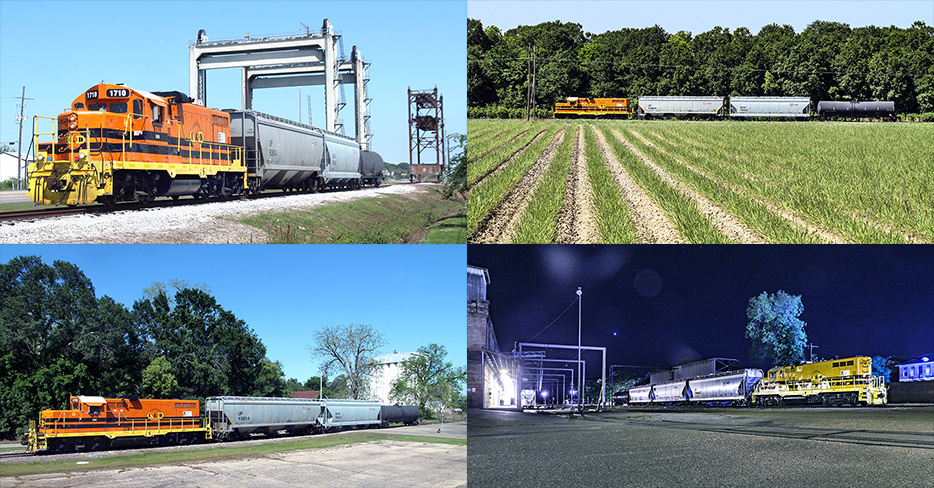EDITOR’S NOTE: As I learned only six days later, this would, in fact, not be the last freight train to the Planters Rice Mill. That happened on the 20th, and I was fortunate enough to chase and voluminously document the return trip the next day. However, this website is, above all other things that it is, a personal blog, and the text narrative that accompanies the images reflects my thinking at the time that I made the images and the knowledge that I had by the end of this day, including the assumption that this was the last train to the mill, an assumption that was based from inferences of evidence from various sources at the time; so, this paragraph, this note, this disclaimer, is the only acknowledgement in this long post that, contrary to what I wrote here, this was, in fact, not the last train to the Planters Rice Mill in Abbeville.
How It Ends, Part 1
These pictures were made on Tuesday 14 April 2020. I first learned that the rice mill in Abbeville, Louisiana, at the end of a 21-mile railroad branch from New Iberia, was closing shortly before I made my March 9 pictures. I missed a March-20 train to and from the mill, which I mentioned, with links to another railroad enthusiast’s videos of that train, in my April 1 post of a train to the mill that surprised me. Two days later, we were surprised by yet another train to the mill, surprised because, although this branch had thrice-weekly service until some time in 2010 or 2011, over the last year, weeks with more than one train on this branch were rare.
Last week, on April 9, Holy Thursday, both Terry and I missed another train to the mill, one that came to town apparently with only a tank car for Coastal Chemical, pulled the one loaded hopper car at the main mill complex, and then moved the three hopper cars that were at the old packaging plant to the main mill complex.
Apparently, those cars were loaded by this morning.
This Is It
This is it. The last railroad revenue run to the Planters Rice Mill in Abbeville was made today. For me, it was a momentous occasion.
I got word at 13:50 from one of my moles that rice cars were headed to the rice mill, that the train left New Iberia some time after 13:00. It is on!
At 14:32, I told my mole “found’em.”
At 14:43, a trainman was lowering the bridge span at the Delcambre Canal as the LDRR 1710 with three cars – two empty hopper cars for the rice mill and a tank car for Coastal Chemical – made their way westward.
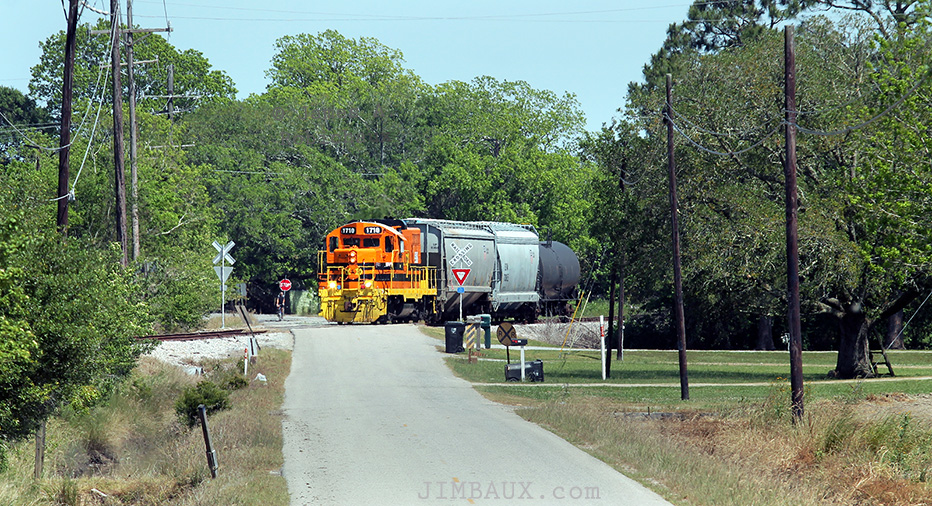
Here, we see it crossing Bob Acres Road, a crossing at a really sharp angle.
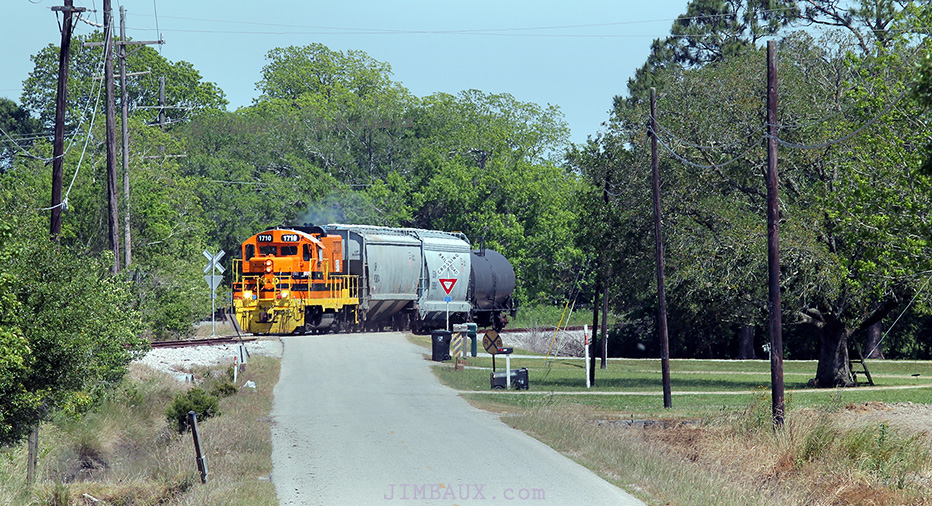
This is a good-looking train for a last run, especially in 2020!
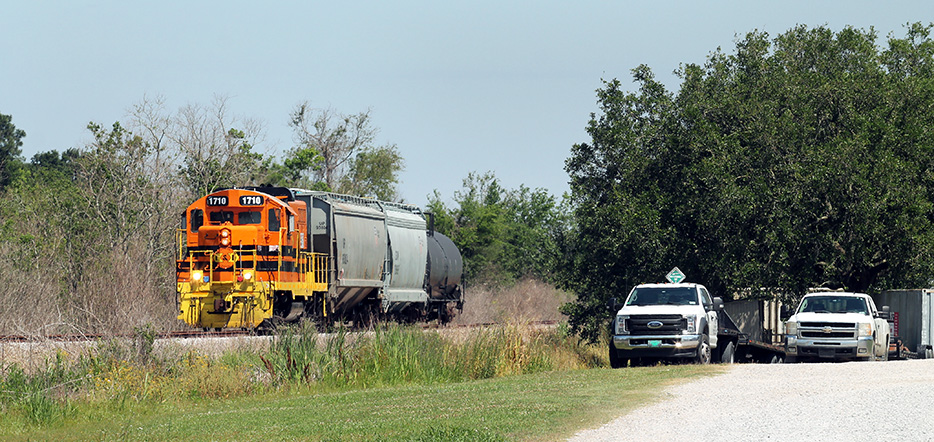
Here the train is now on the other side of the Delcambre Canal, and, look, it’s Peartree!
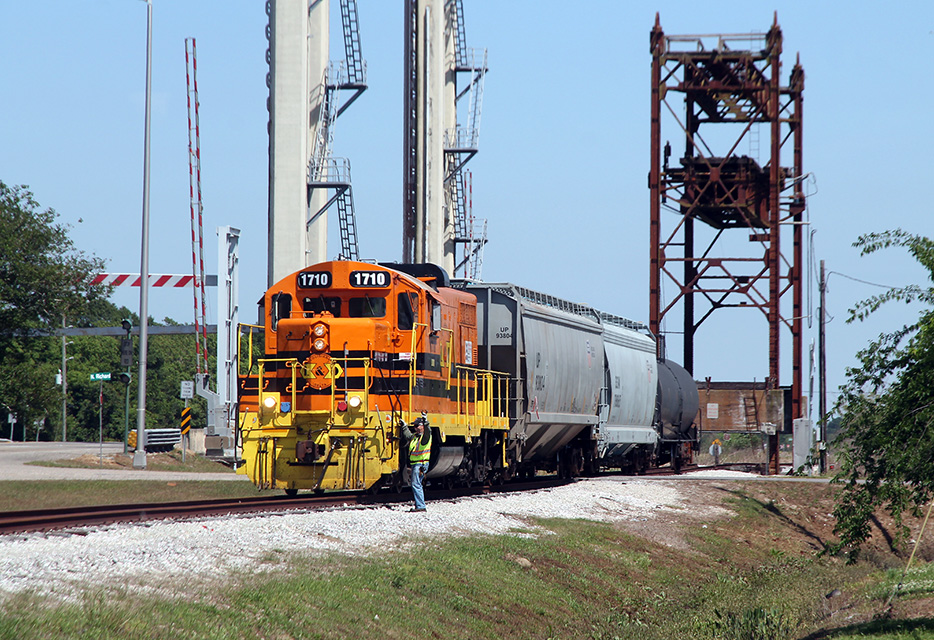
It’s appropriate that Peartree is on this last run to the rice mill in Abbeville!

There is no graffiti, at least not any that is discernable and impossible to ignore, on these cars, and I am so grateful for that.
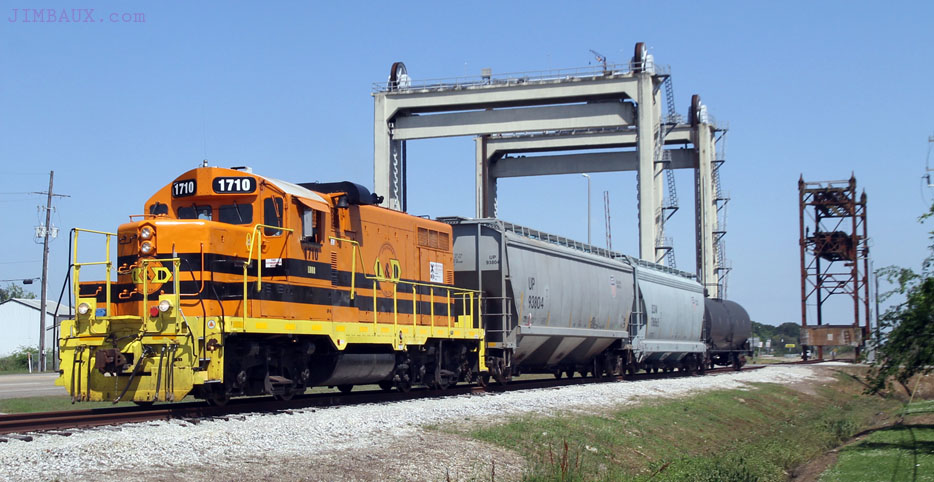
Next, on the eastern edge of Erath, I did a variation on the shot from Jude Road.
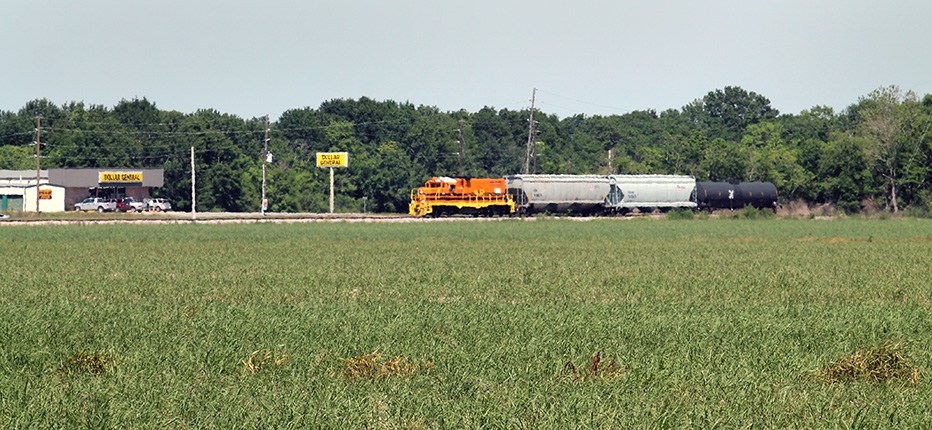
The heat distortion is bad here, as this is a nice, cool, sunny day, but I’ll take what I can get.

I like the sugarcane fields, especially for a train that is going to a rice mill.
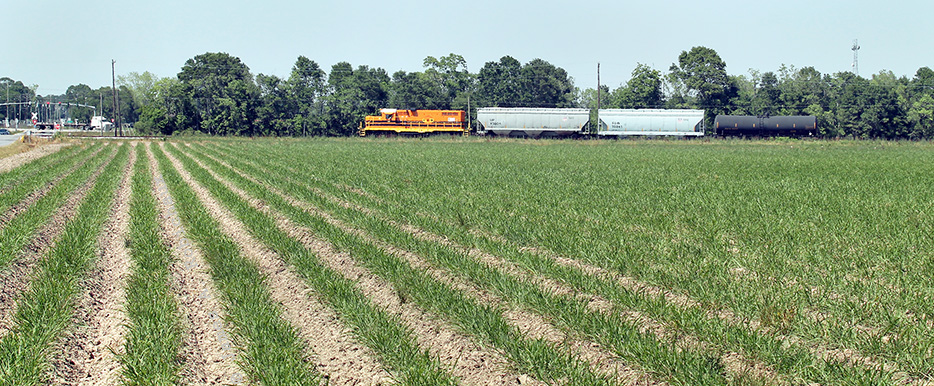
One of the reasons for the rice mill’s closure may be that sugarcane has basically, over the last 20 years, encroached westward into rice country.
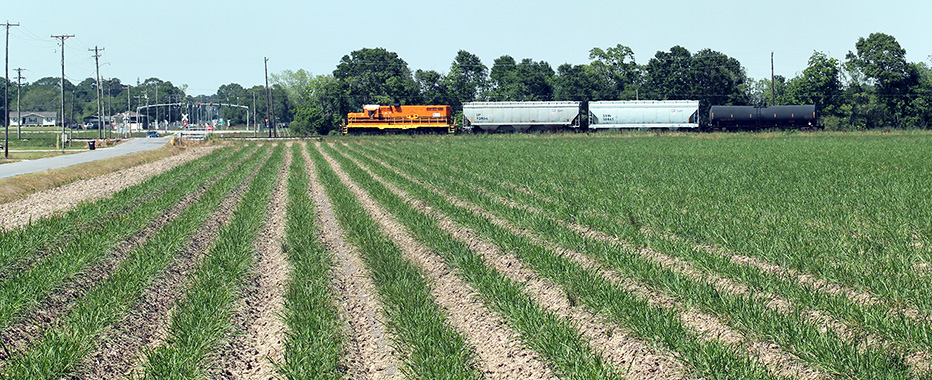
I like that view.
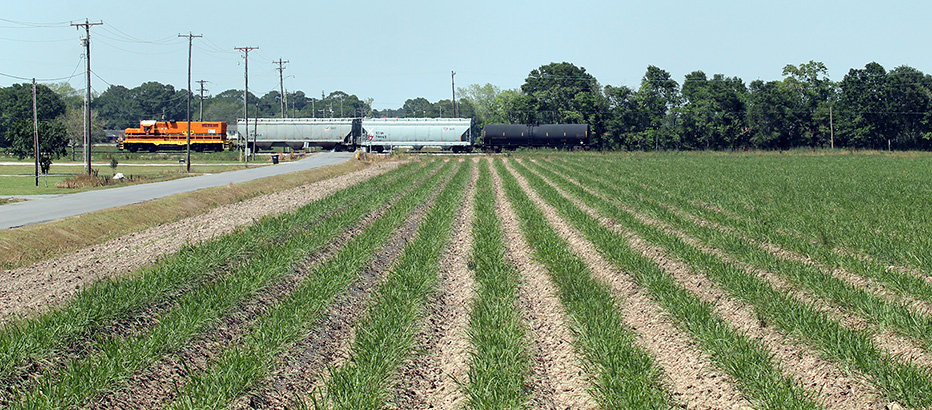
Here we are in downtown Erath.
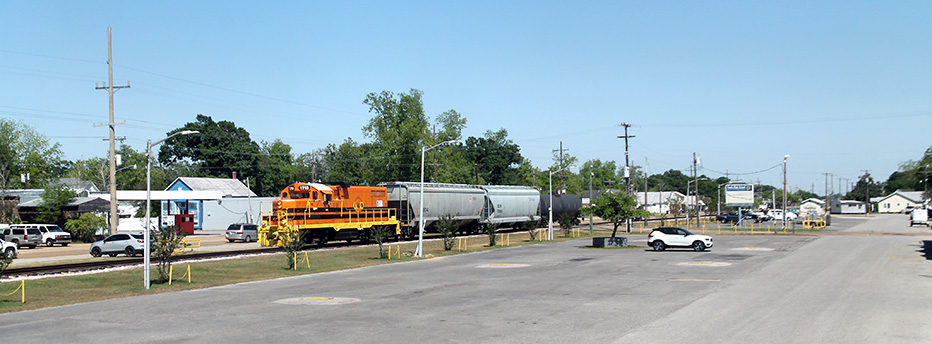
Normally, I wouldn’t photograph here, but, as this is the final run, I will document the train in as many locations as I can, image quality be damned.
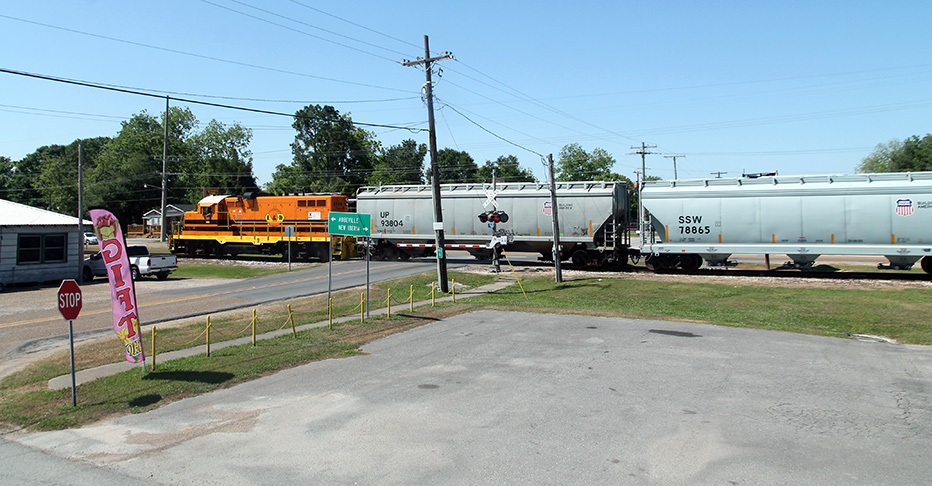
Here is the train at West Erath.
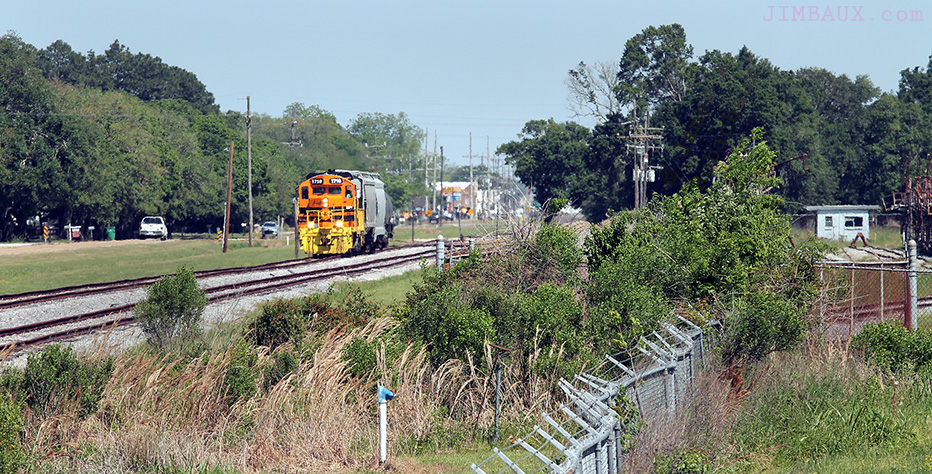
The runaround track here was built for a gas-loading company that loaded big tank cars here until about 30 years ago.
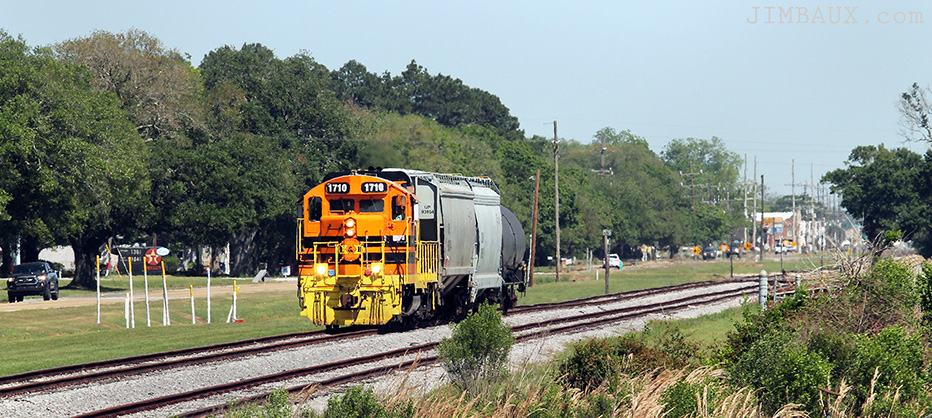
At around that time, this railroad branch, if you include parts of it close to the mainline, lost three major customers in a short period of time: this gas place, the rice mill in Kaplan, and the salt mine in Avery Island.
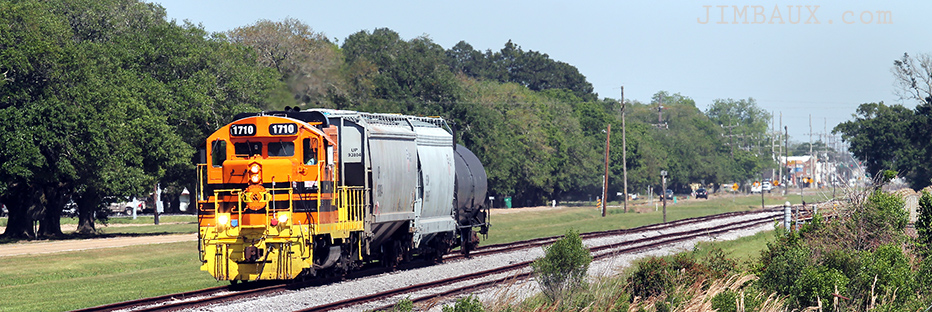
It didn’t really “lose” those other customers, though. Deregulation allowed the railroads to charge cost-covering rates, meaning that the railroads had been losing money on the salt hauls, and a bridge to the mill at Kaplan burned and costed too much to repair.
So, for the last 20 or so years, this line has been surviving just from the traffic at the rice mill in Abbeville that is now closing.
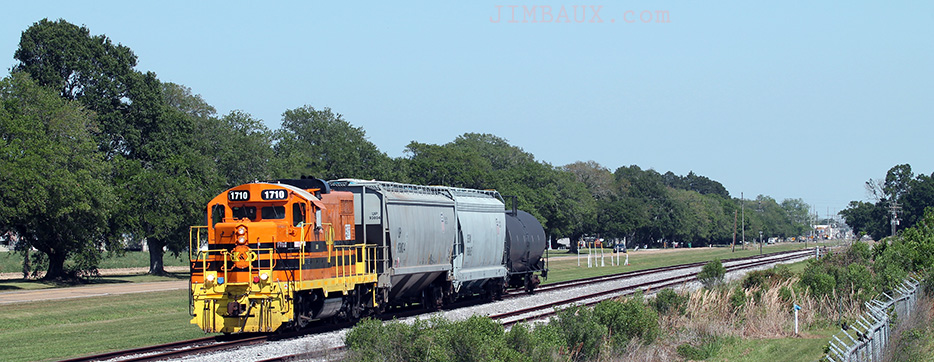
There is Peartree!
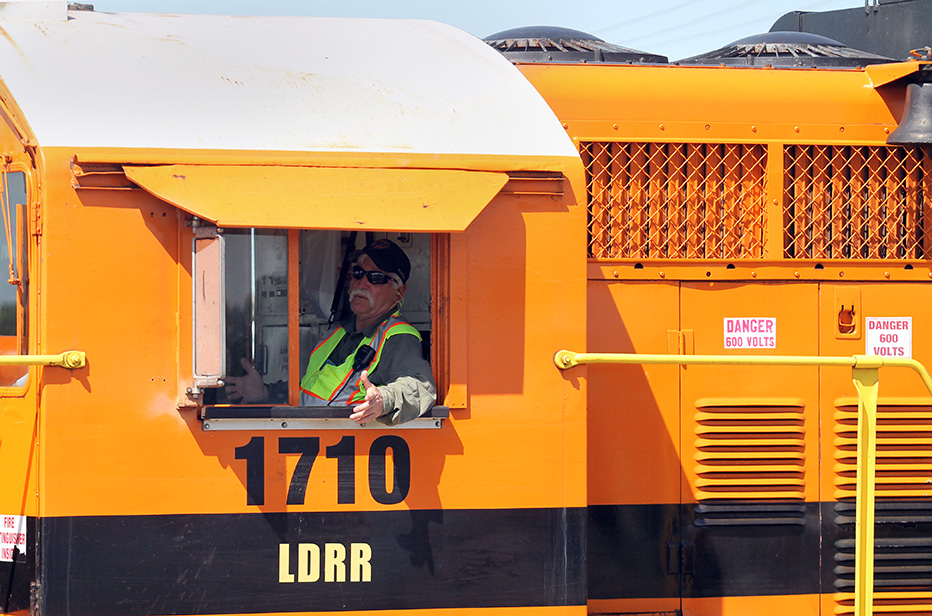
Next, we are at South Grosse Isle Road, where the jointed rail is, and I love the jointed rail.
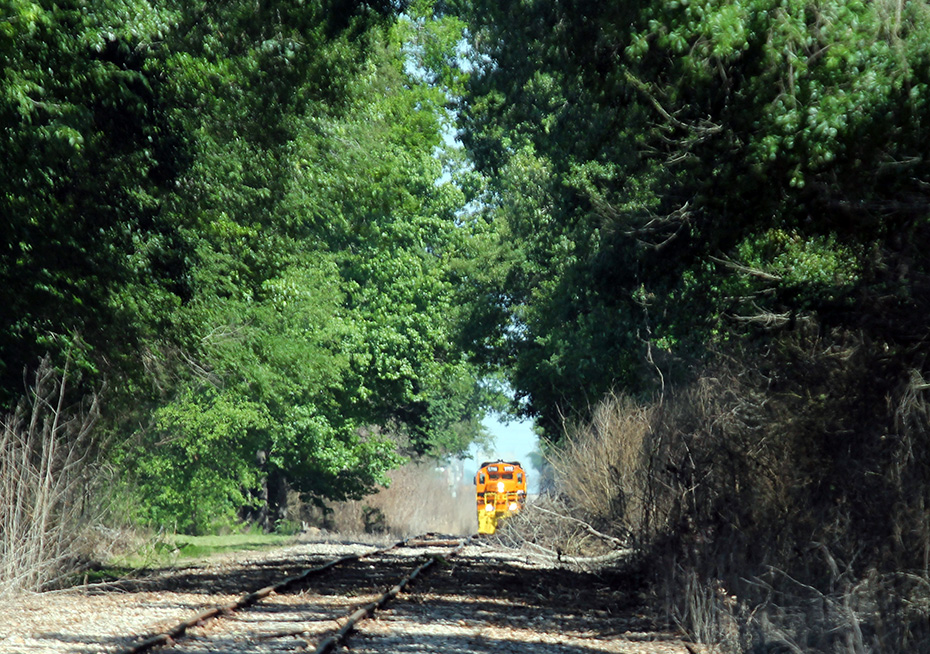
Okay, I actually didn’t wait for the train to get closer, because I needed sufficient time to get to the shot that I really wanted at Greenbriar Lane, and I did.
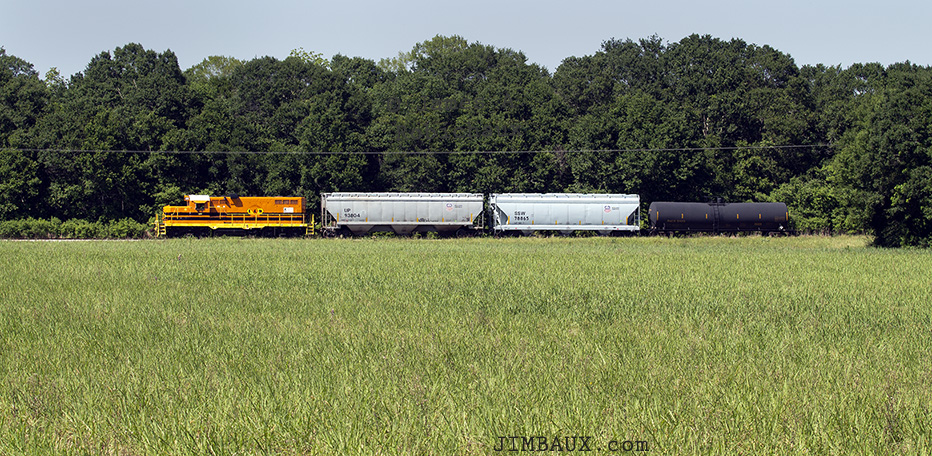
This is a really good textbook broadside shot, almost perfectly lit.
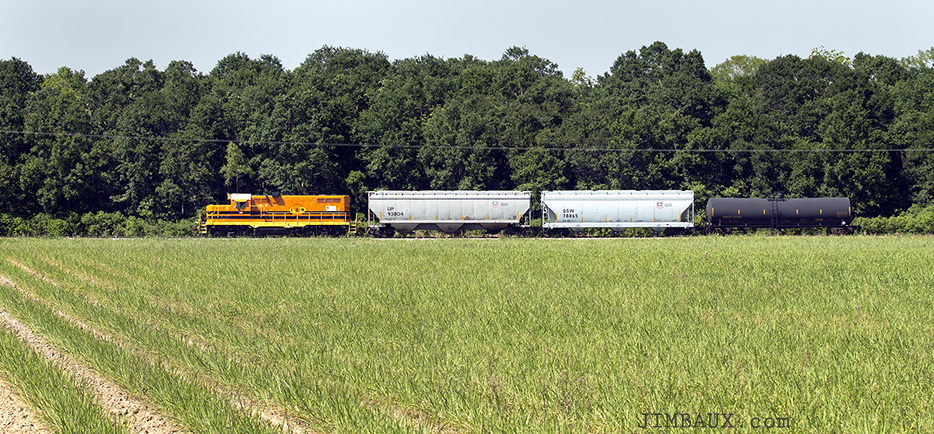
The next one here is better, with the lines of the canefield converging not only within the frame of the image but also where the locomotive is.

I really love that. You may not think that that is the shot of the day, but I think that it is, as that scene is so evocative of childhood memories for me.
Next, we are in town, at South Saint Valerie Street.
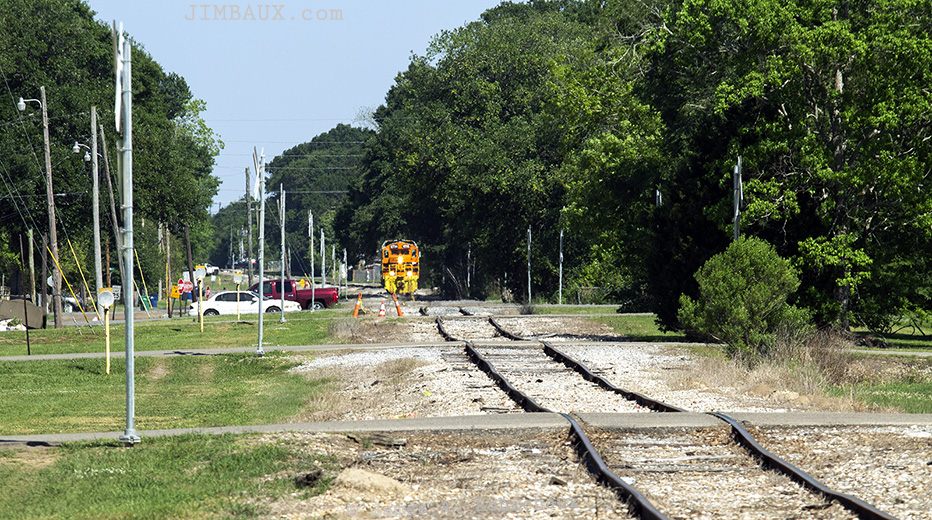
Just like at South Grosse Isle Road, I am not going to wait for the train to get any closer before I take off to another photo location, but I love the hump effects of this jointed rail at the crossings.
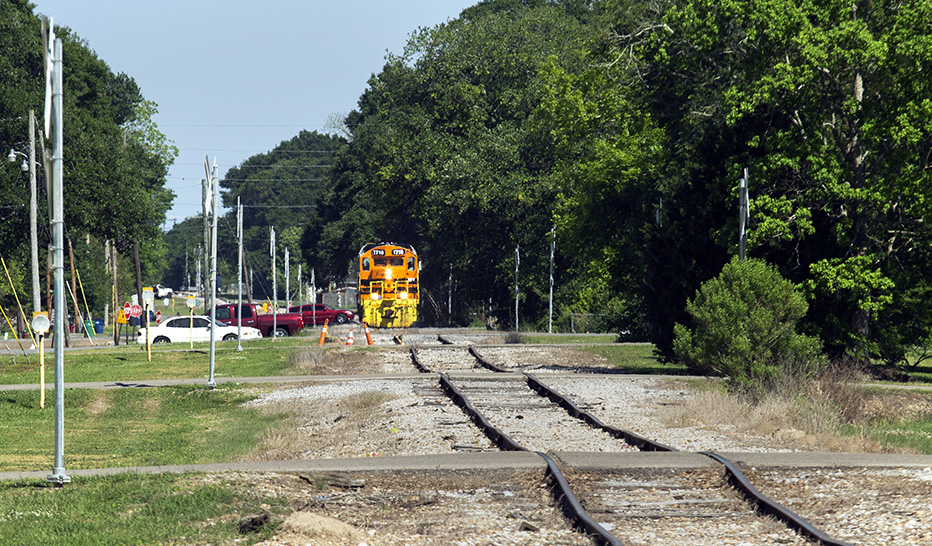
With little time to spare, I got to the South Saint Charles Street shot, the first time that I am able to do this shot in more or less perfect-except-for-high-sun lighting with a train with no graffiti.
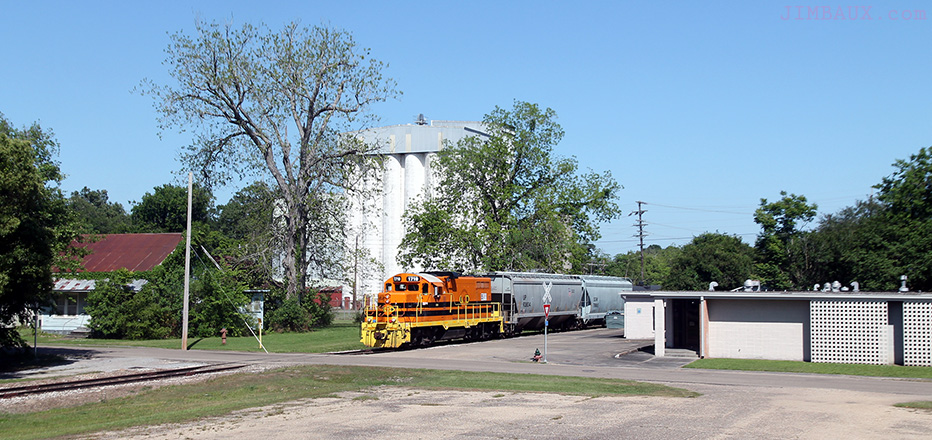
Yes, I really, really, like this, and I am pleased that I accomplished this with the last train.
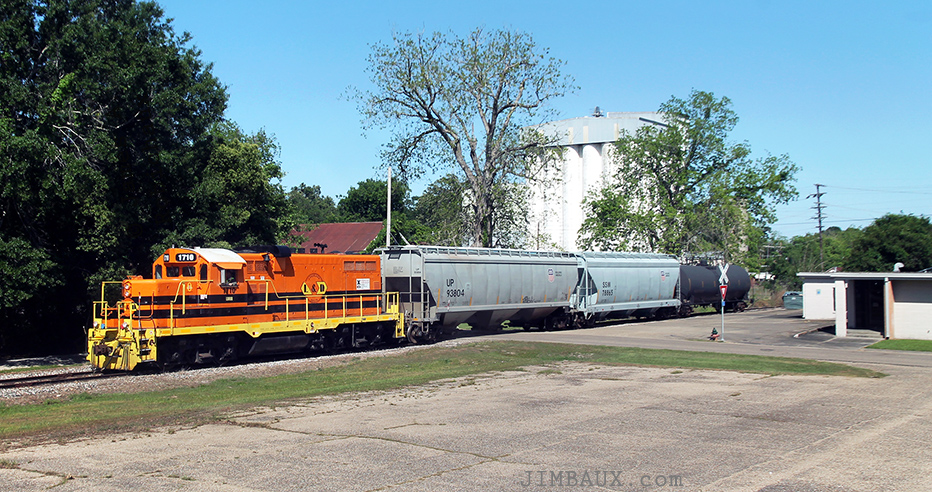
What also helps is that the train is short enough to entirely fit into the short distance of track shown in the frame.
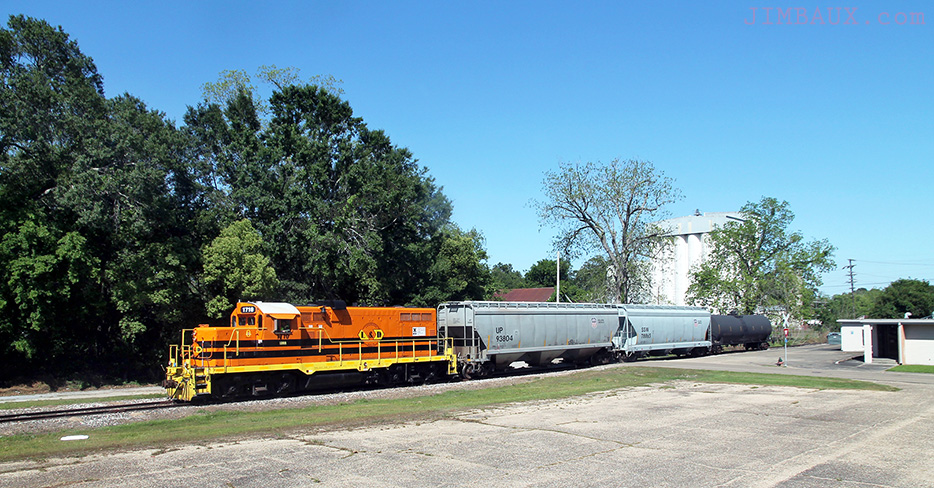
Am I being too repetitive here?

Once again, there was a gaggle of people staring at me at that auto-repair shop behind me as I took these shots from atop the truck.
Next, the train arrives at the rice mill.
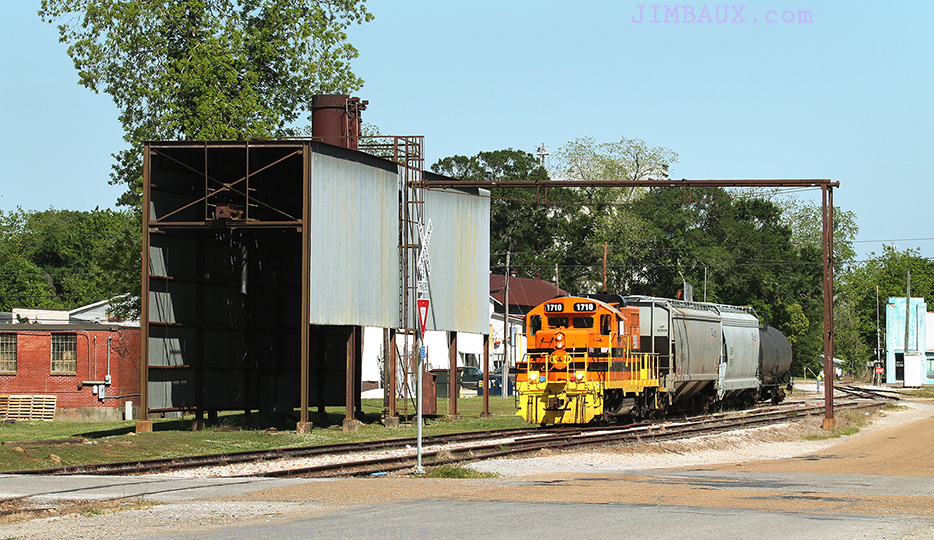
The 1710 breaks off to run around the inbound cars.
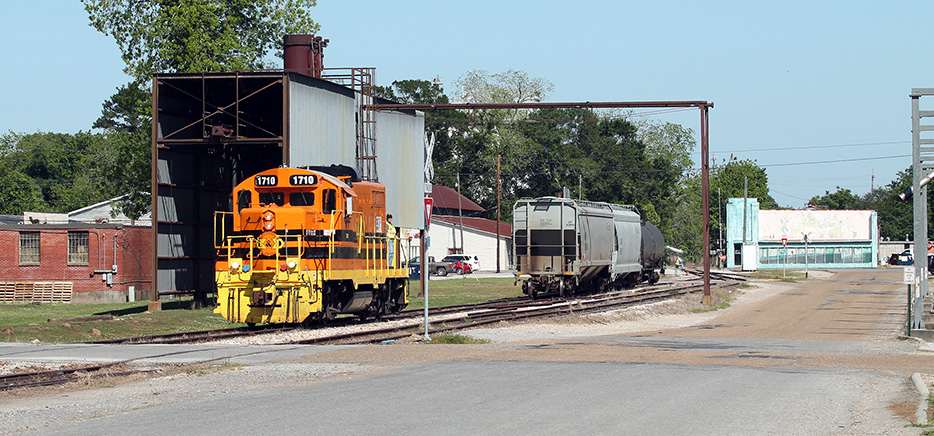
The structure in the back is the old hull loader, where rice hulls were once loaded into hopper cars, a practice that ended about 30 years ago.
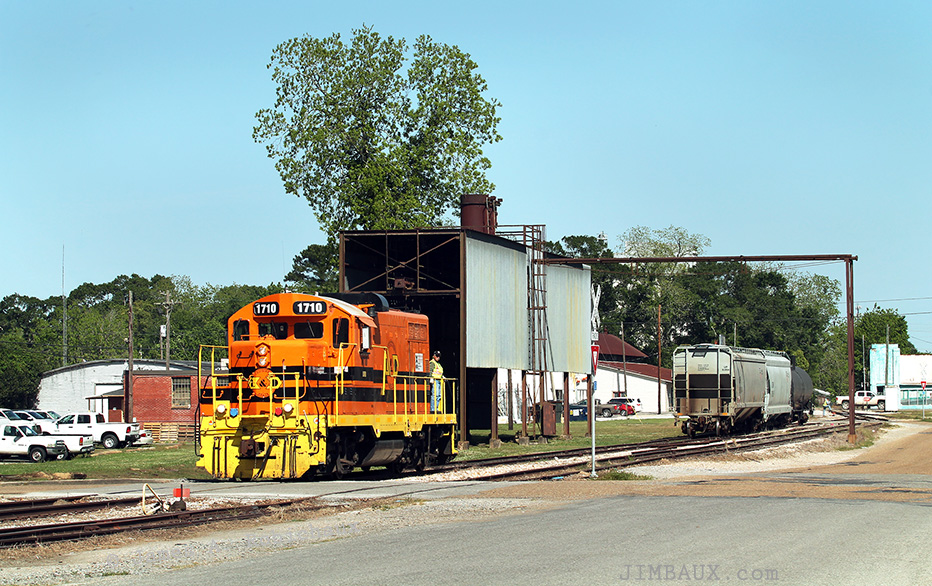
Peartree lines the switch for the runaround track.
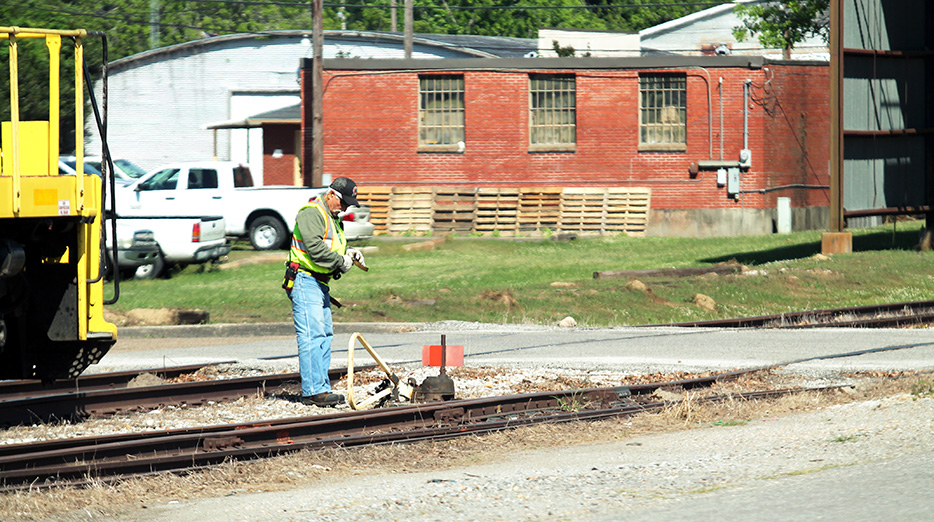
Peartree started railroading in 1973!
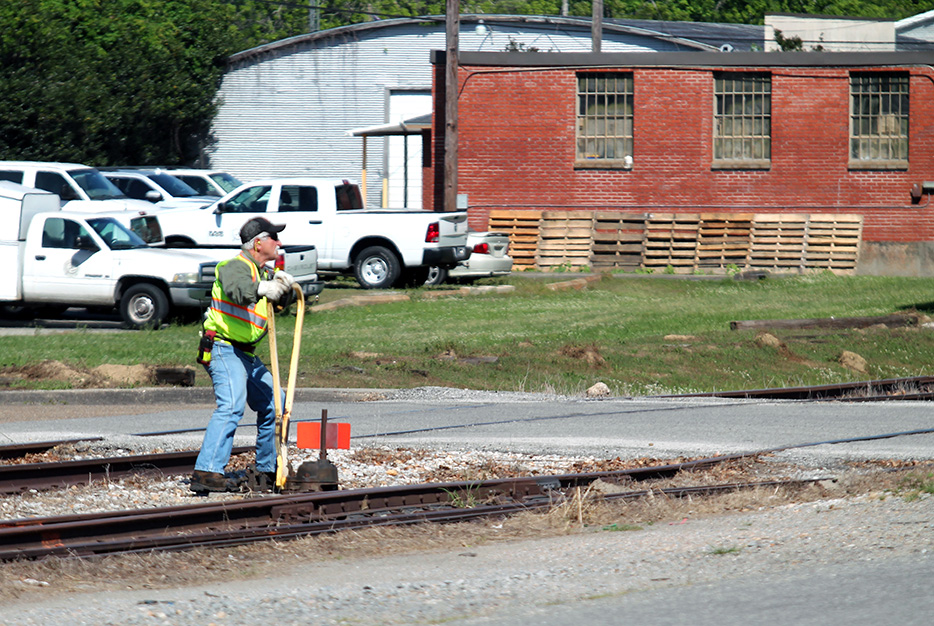
He started with the Southern Pacific and worked this line back when it extended all the way to Eunice where it connected with the Chicago, Rock Island & Pacific Railroad!
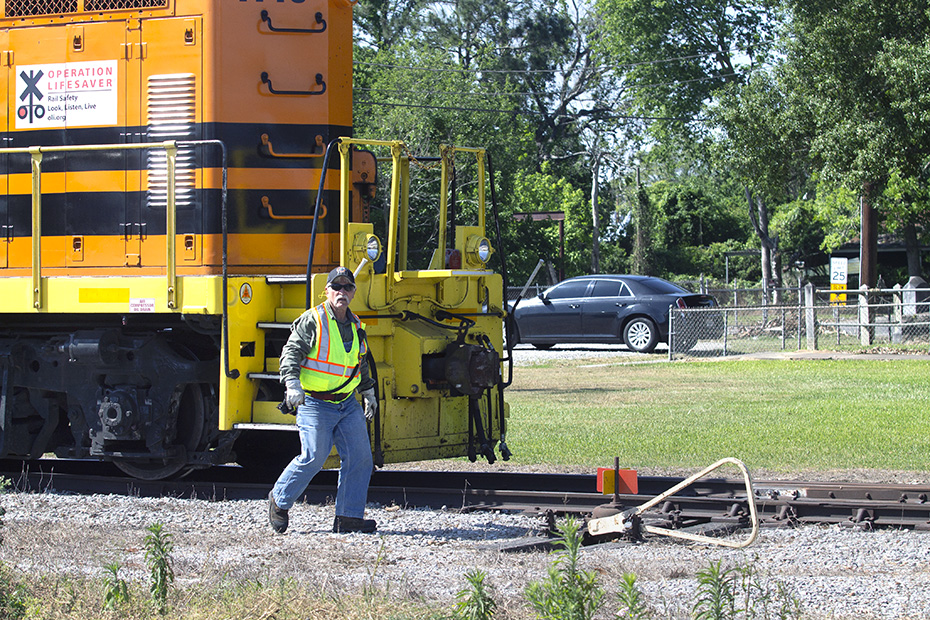
He was away from railroading for some years in the middle of that time period.
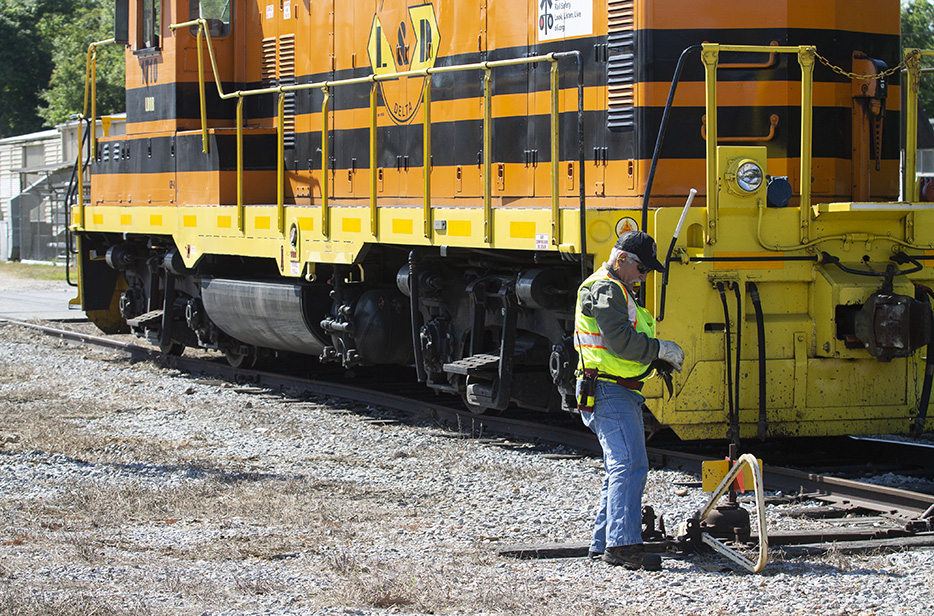
Anyway, he is a treasure to the local railroad scene and a treasure-trove of information.
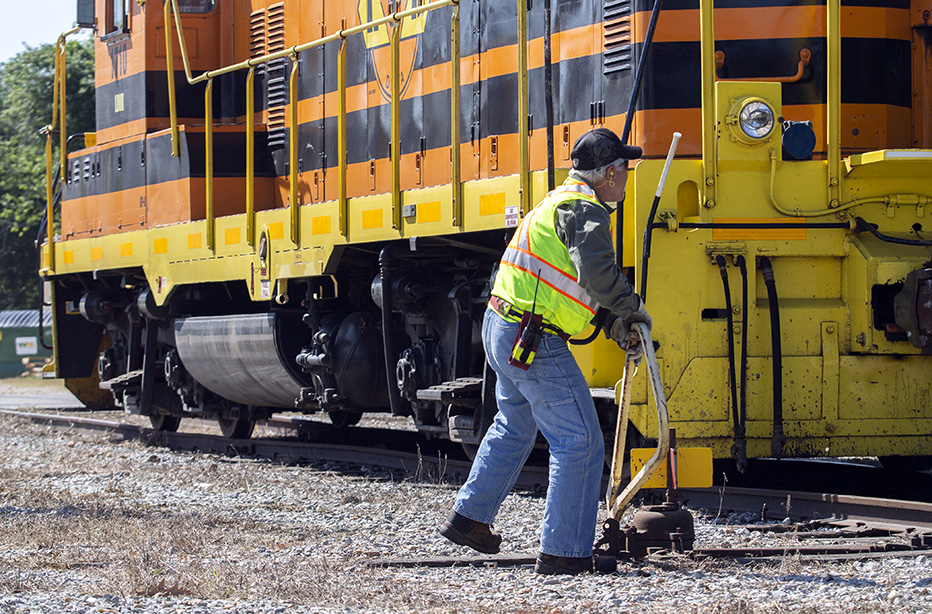
The switch for the runaround track gets lined.
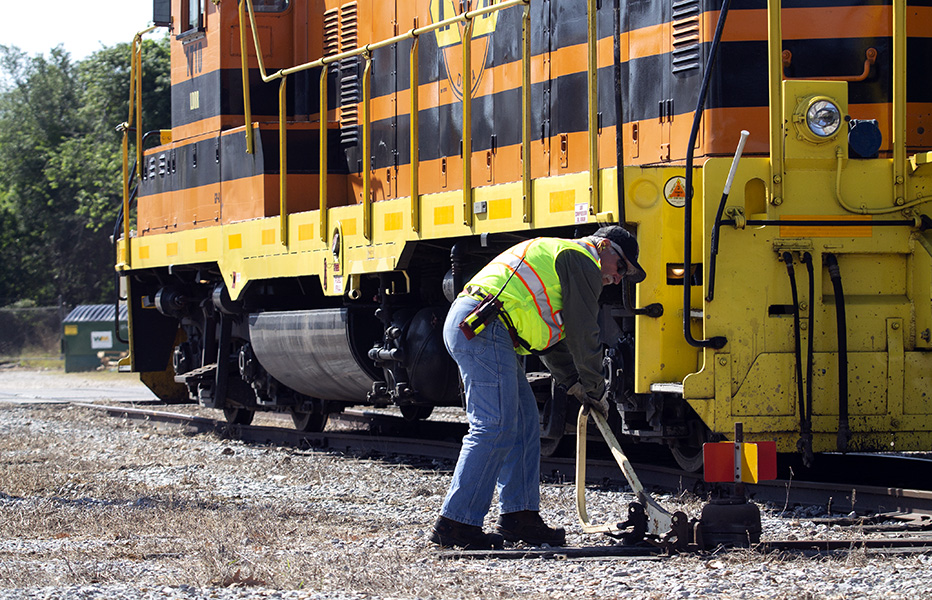
I think that the original passenger depot was where that hardware store is.
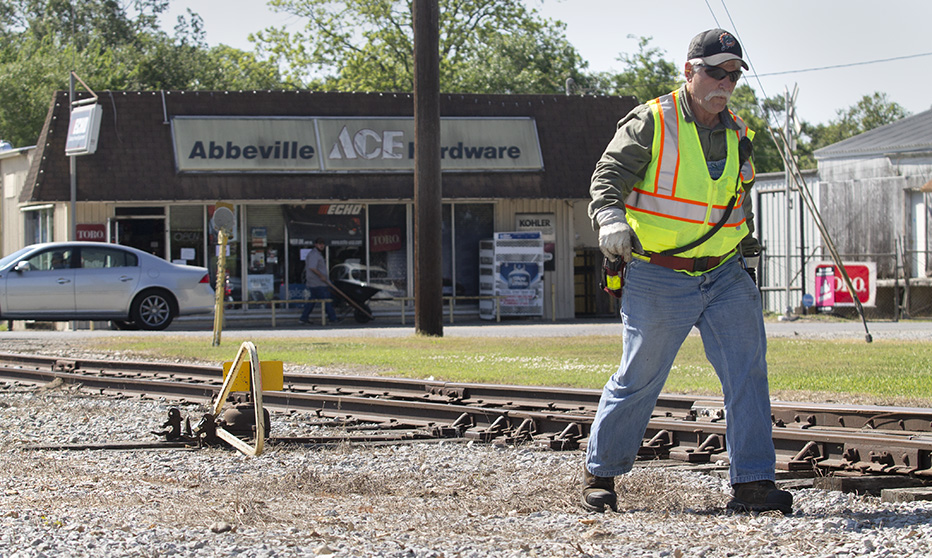
The LDRR 1710 is now running around the cars that it is obscuring in the below view.
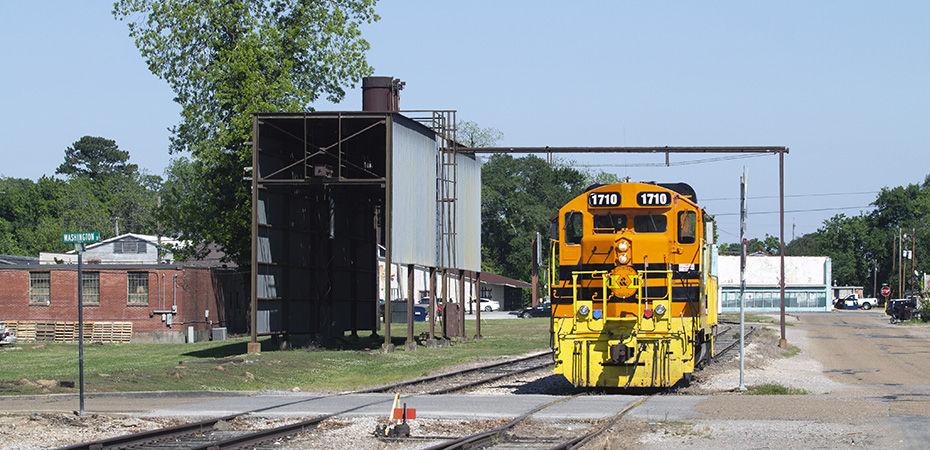
Peartree walks the track instead of riding on the locomotive.
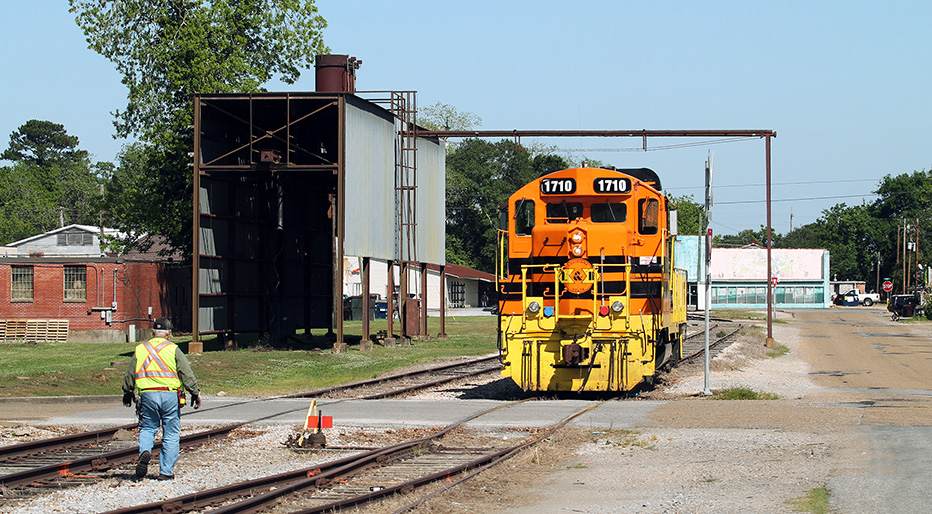
I then move over to South Jefferson Street, where I photograph the 1710 entering the mill to grab the outbound cars.

Ha! Look! Peartree is bowing for the camera!
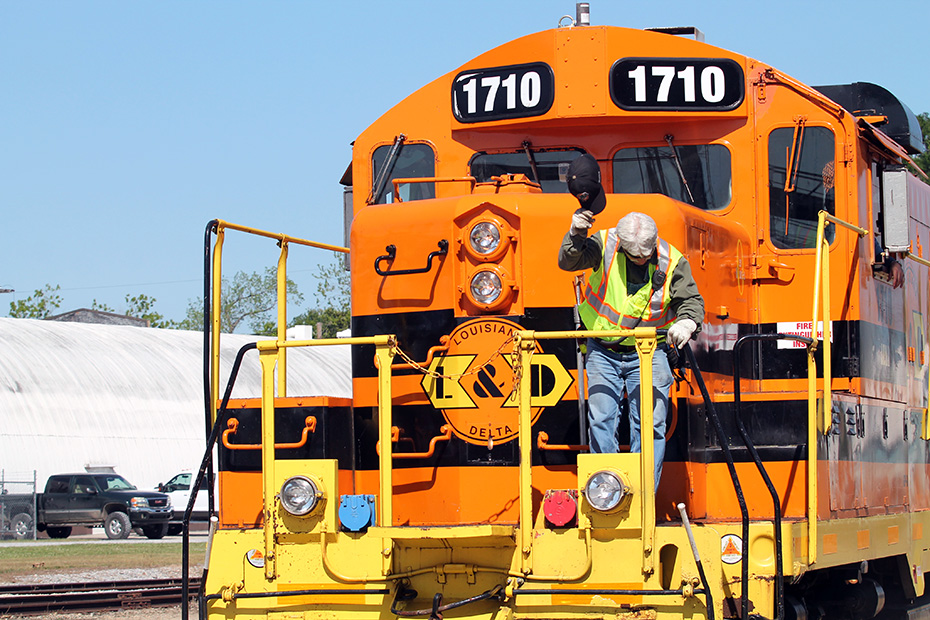
The first time that he bowed for my camera was a little bit more than a year ago, on 7 March 2019.
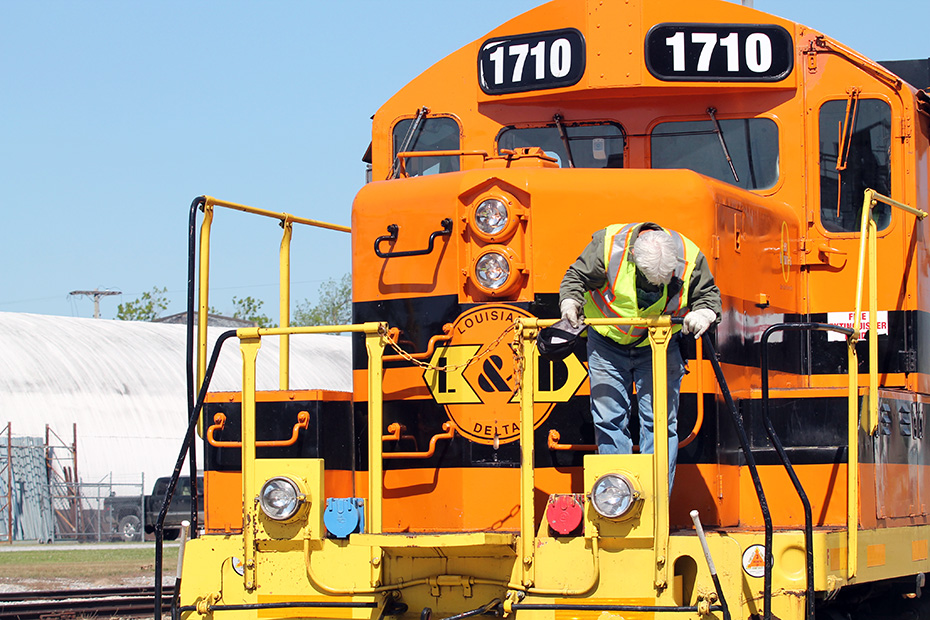
I love it!
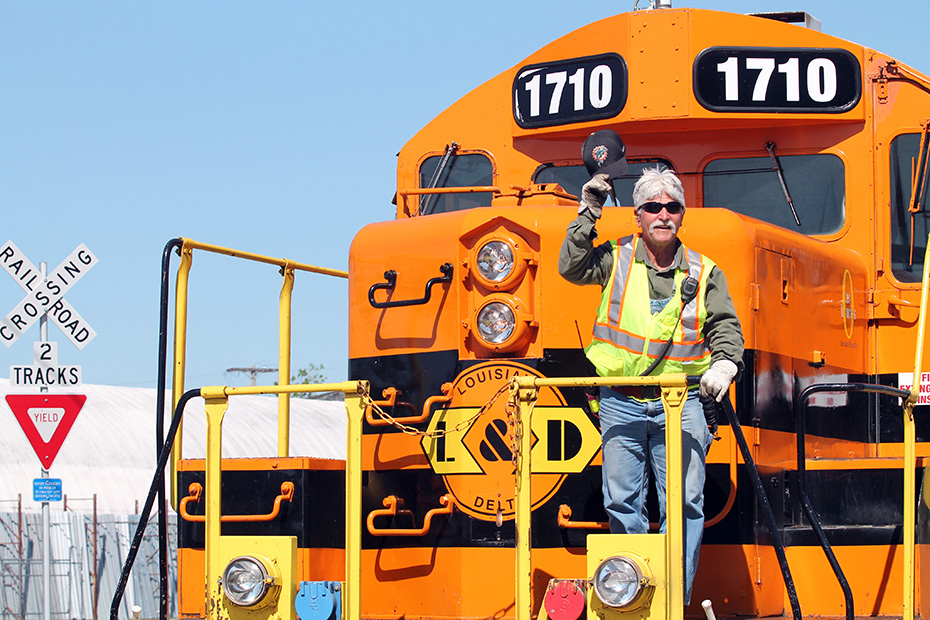
The man has spirit, and what an appropriate thing to do on the last time serving the rice mill this is!
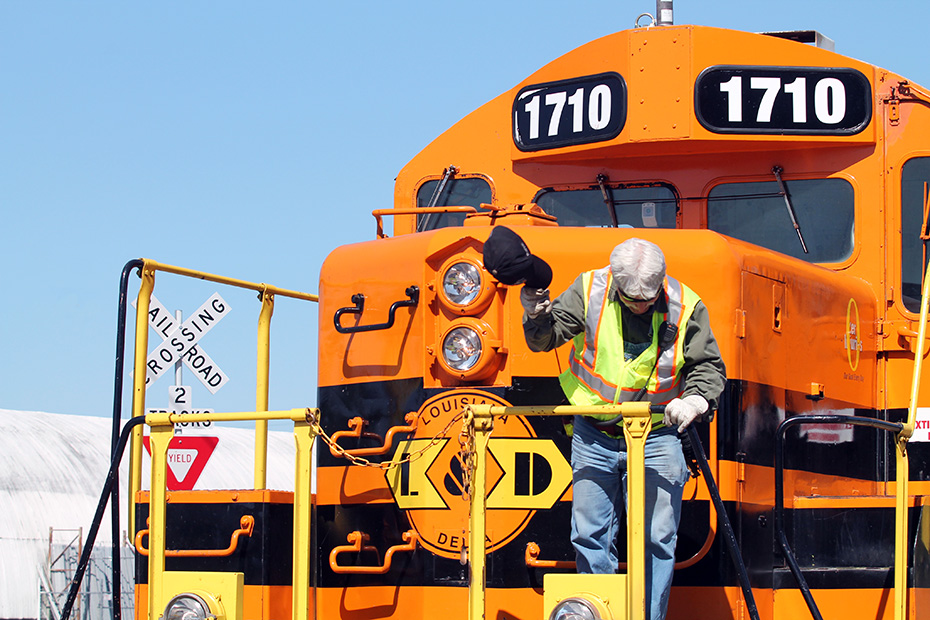
I don’t fault the railroaders who don’t like being photographed for not wanting to be photographed, but this is great.
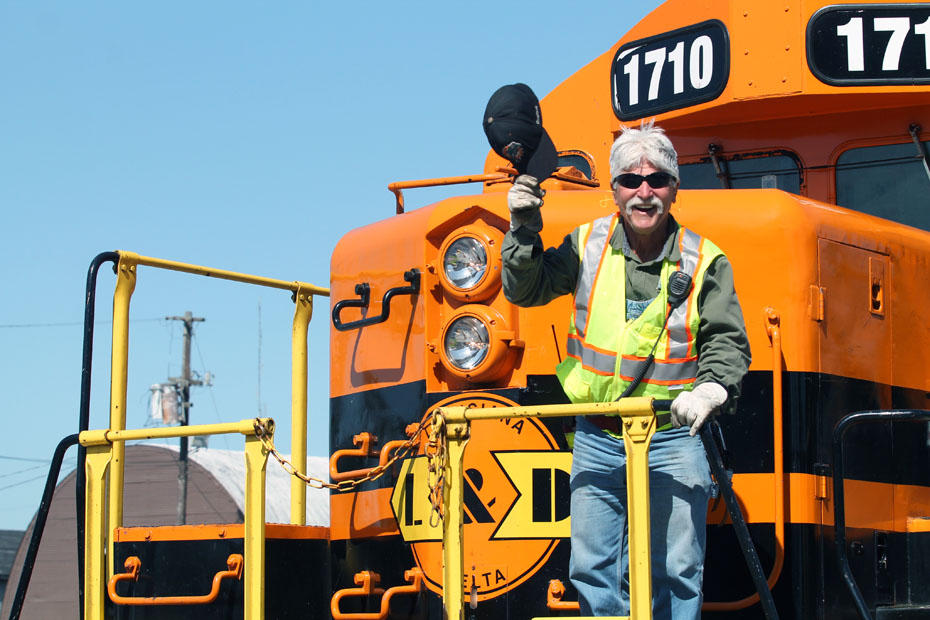
Thanks, Peartree!
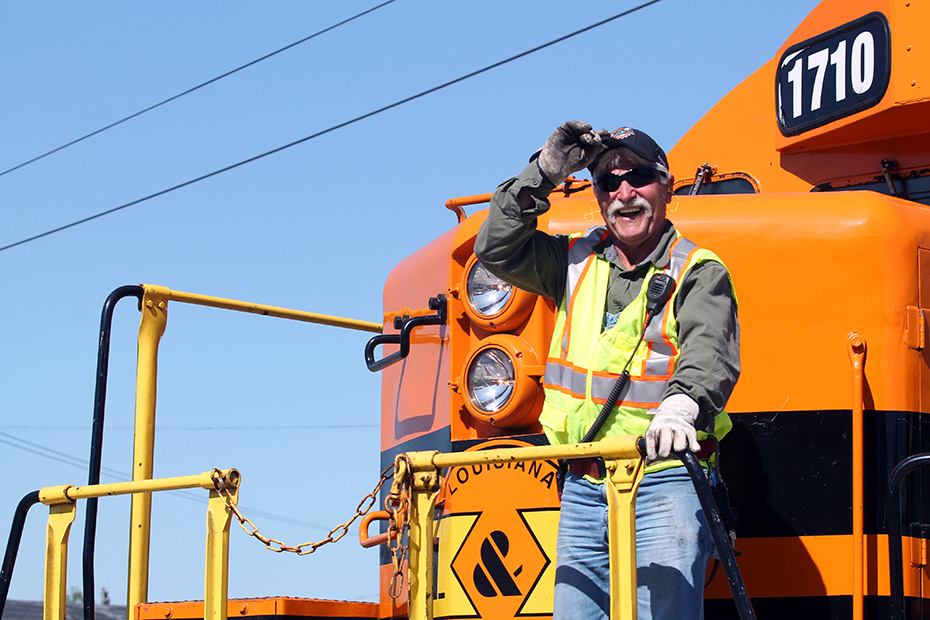
CV, in the conductor’s seat, follows Peartree’s lead and tips his hat, too, saying, “I don’t have any hair.”
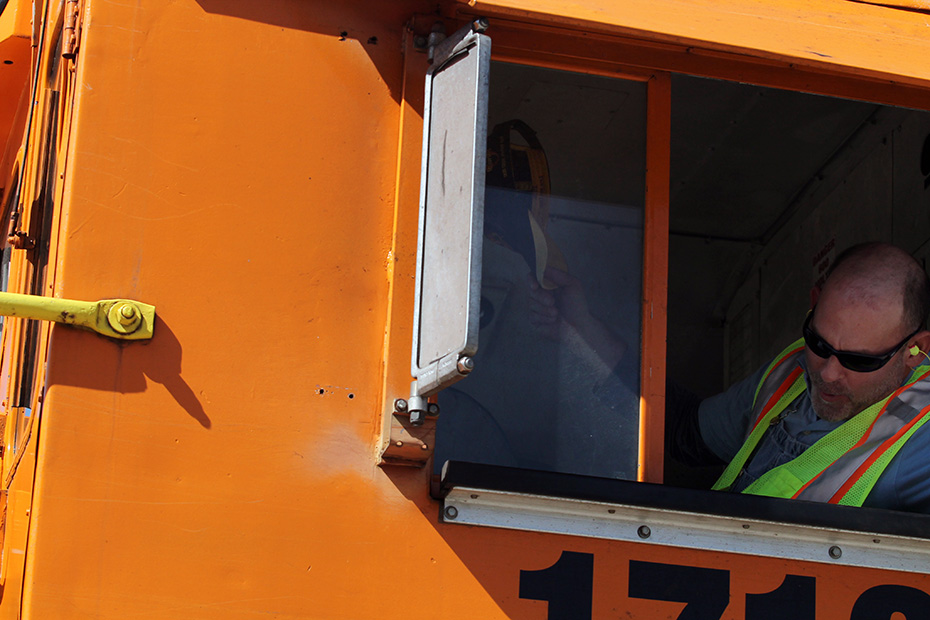
It’s rare that anyone is in the conductor’s seat while the rice mill is being switched, but there were four trainmen working here today.
This truck was working at the site across South Jefferson Street where that old store was.
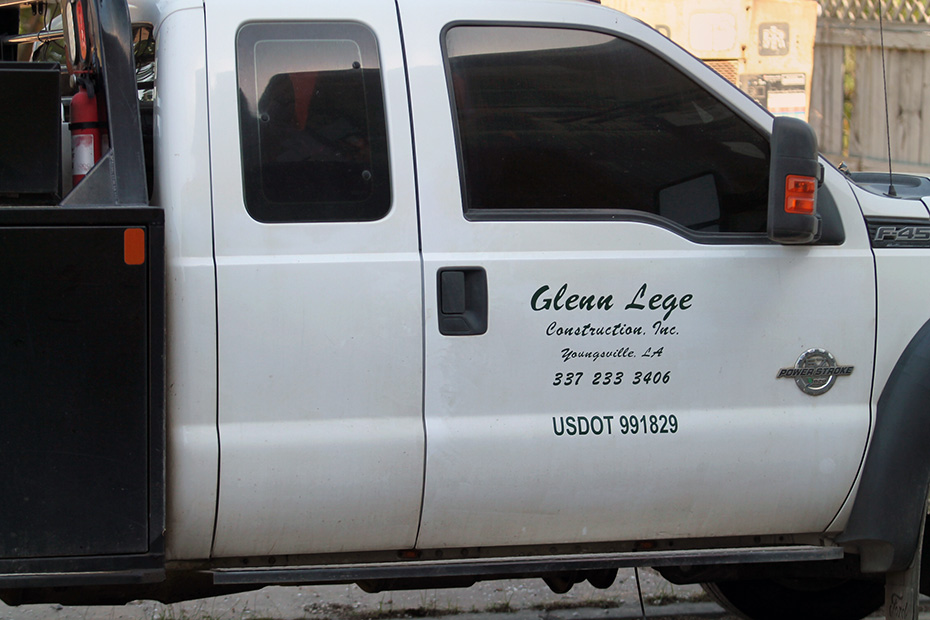
They were just making the lot almost like new, or something.
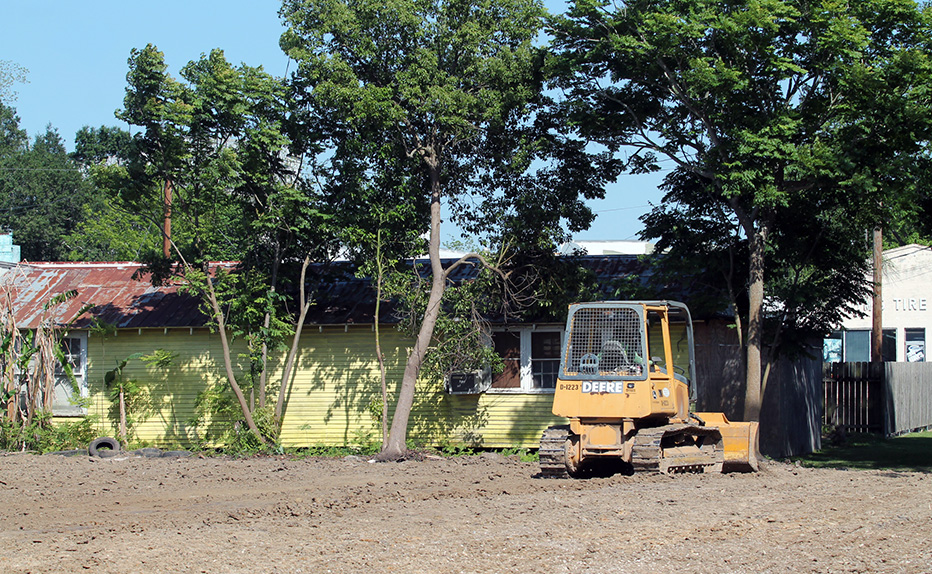
Okay, now, the three cars that had been at the mill pulled from the mill, those cars are now being shoved toward the inbound train to couple to it.
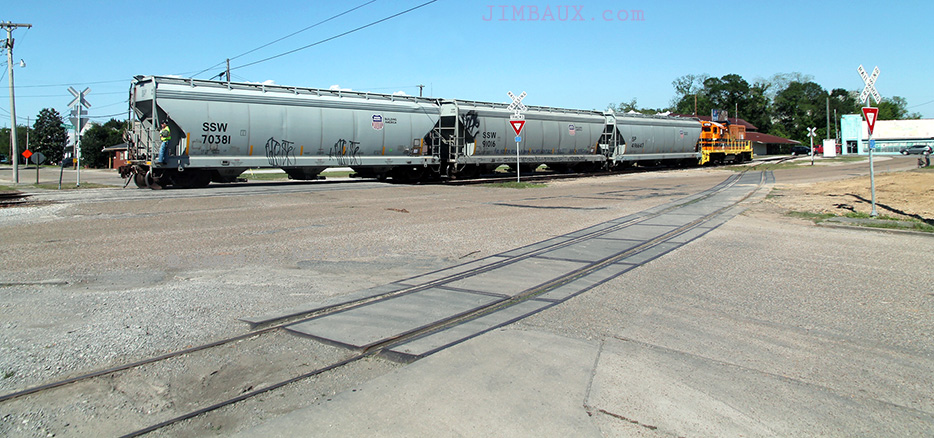
Peartree walks the SSW 70381 and the rest of the cut to a coupling with the tank car.
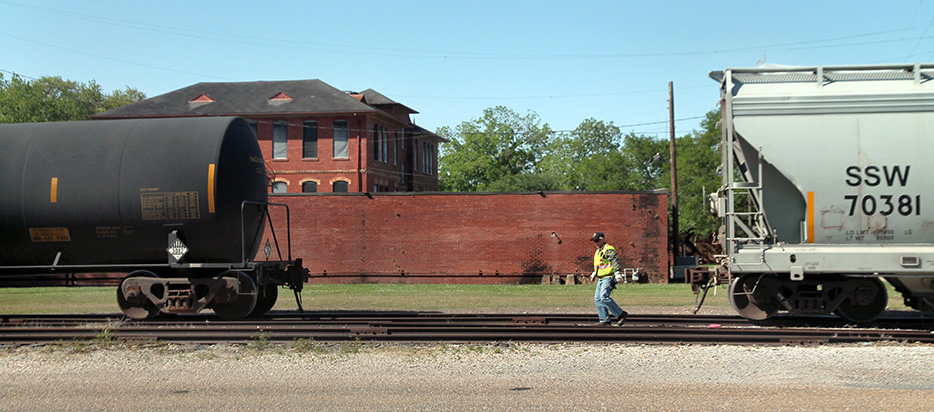
That building in the background is the old school, serving now as an administrative building for the school system.
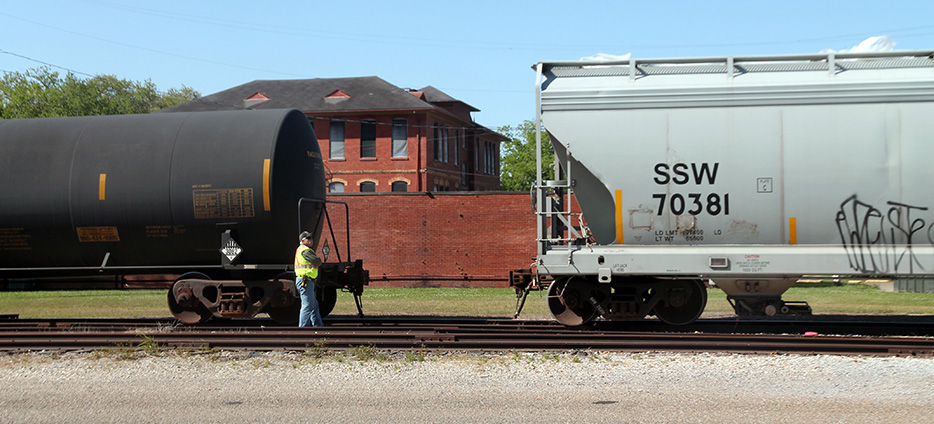
The crew is coupling the two cuts together and preparing to pull them past the switch of the track in the foreground to shove the whole thing to the mill to spot the two inbound hopper cars.
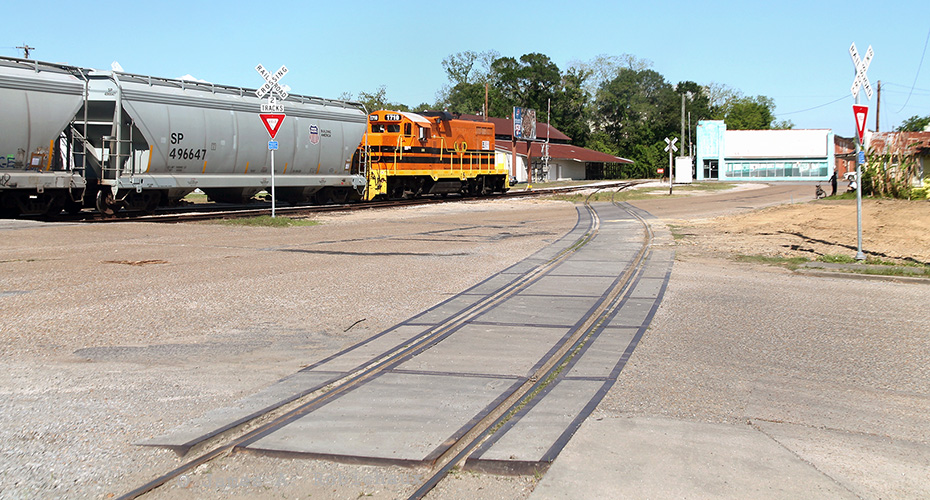
I did not take any still photos of the shove of cars into the mill, because I got this neat video with Peartree waving at me – really, for the camera – as he protected the shove.
So, here are the outbound cars being pulled out after the inbound cars are spotted.
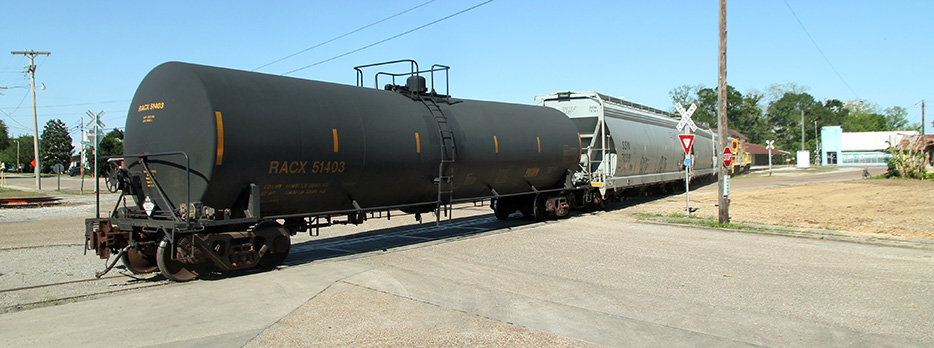
The below views have been only recently made possible by the dismantling of the old grocery-store building that was in that open lot where that machinery is working.
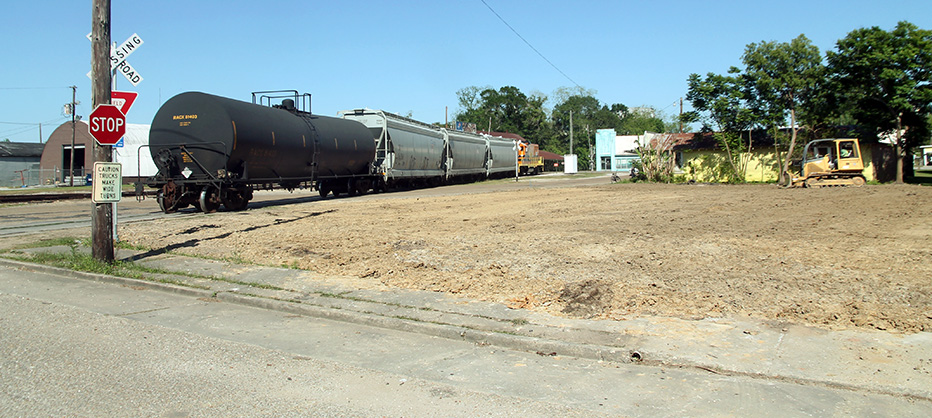
Surely, with all of switching work here done, the crew is just going to keep pulling this cut eastward and leave town right now, right?

No? What’s this? Why are these cars being shoved back, as evidenced by Peartree protecting the shove on the tank car, to the west?
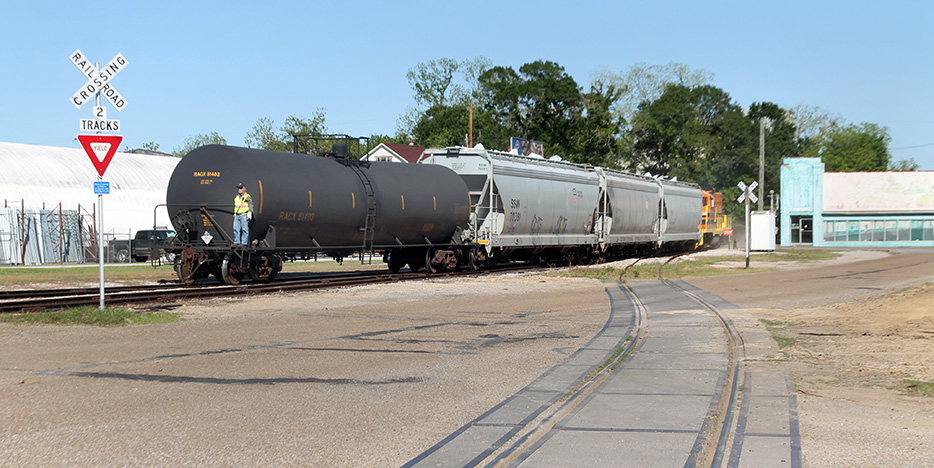
What is happening here?
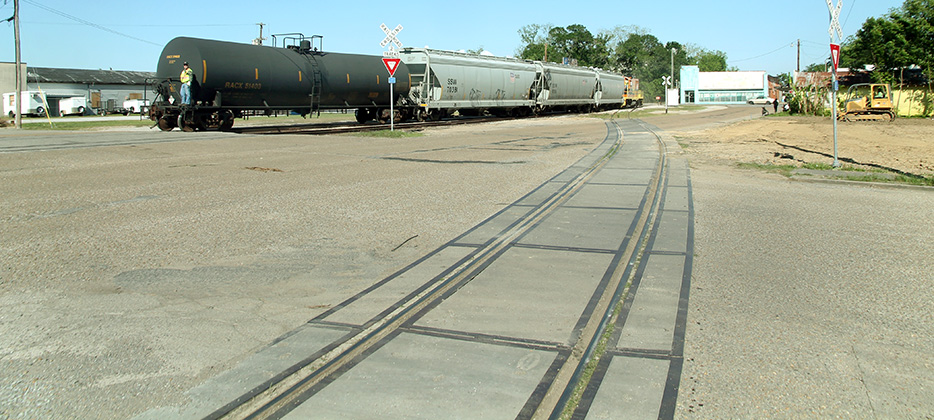
Whoah! Wait a minute.
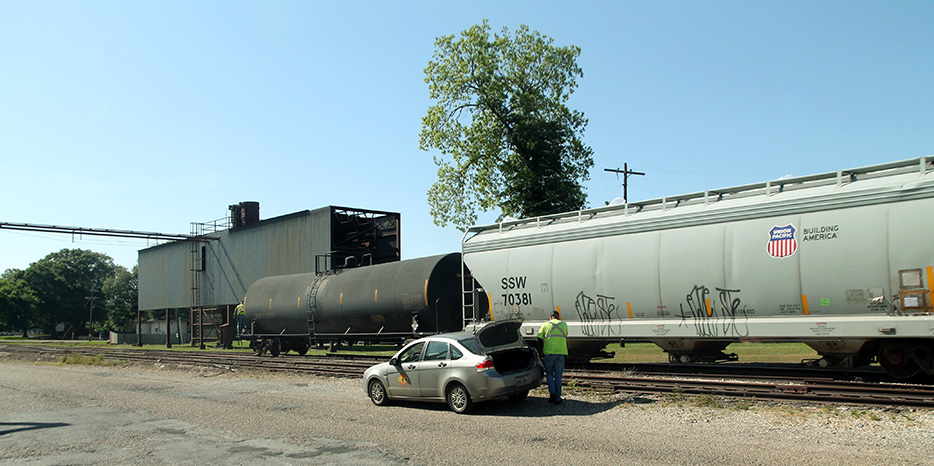
Wait, are they doing what I think that they are doing? and why I think that they are doing it?
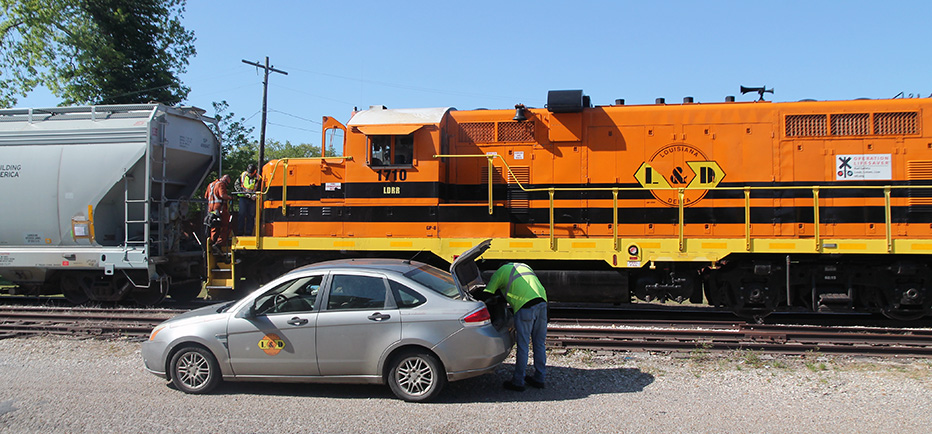
Yes, wow, I’ll be gosh dern, they really are tying the locomotive and cars down here, bringing the ice chest out of the locomotive and leaving, all four of them, in that sedan back to New Iberia.
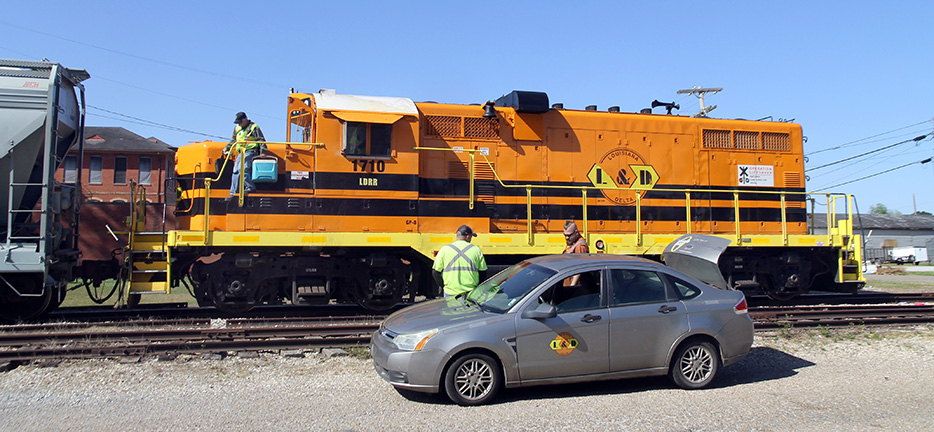
It’s still relatively early in the workday; it’s only just past 16:30 CDT, and I am so accustomed to trains on this branch running much later than that.
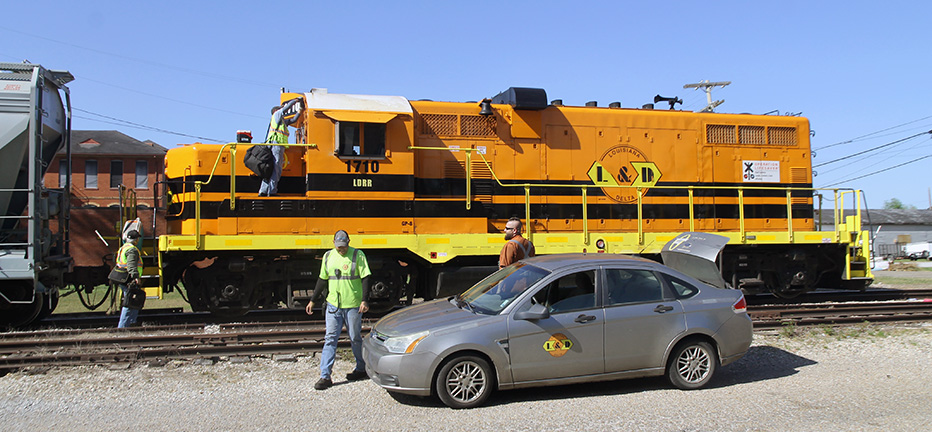
And, just like that, they leave in the sedan, the two inbound empty cars just spotted at the mill at left and the outbound loaded cars with the loaded tank car bound for Coastal Chemical at right.
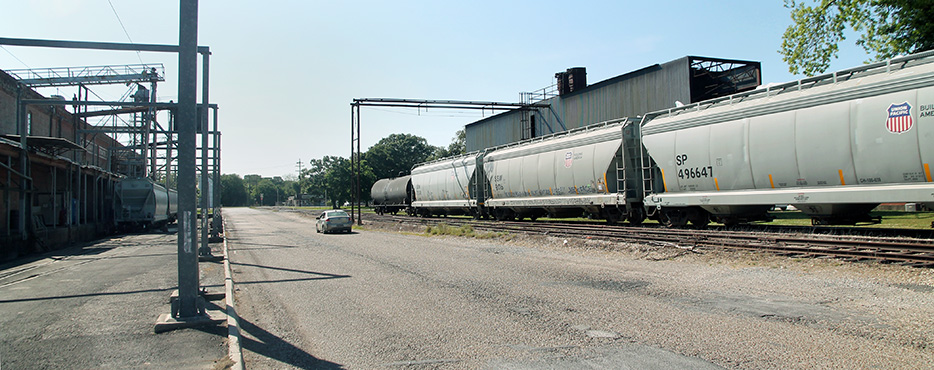
As you might have already guessed, what is happening here is that the locomotive is being left here to wait for the two cars that it just brought to be loaded, after which a crew will tax back over here to take all six cars out of here.
This is not completely abnormal, but it makes sense especially in the current circumstances of a last run, unless the Louisiana & Delta Railroad would be really short on locomotives and need that locomotive doing something else tomorrow morning (and it doesn’t), doing this makes sense because it makes more sense than having a locomotive come all the way back here with no cars to bring just to pick up two cars.
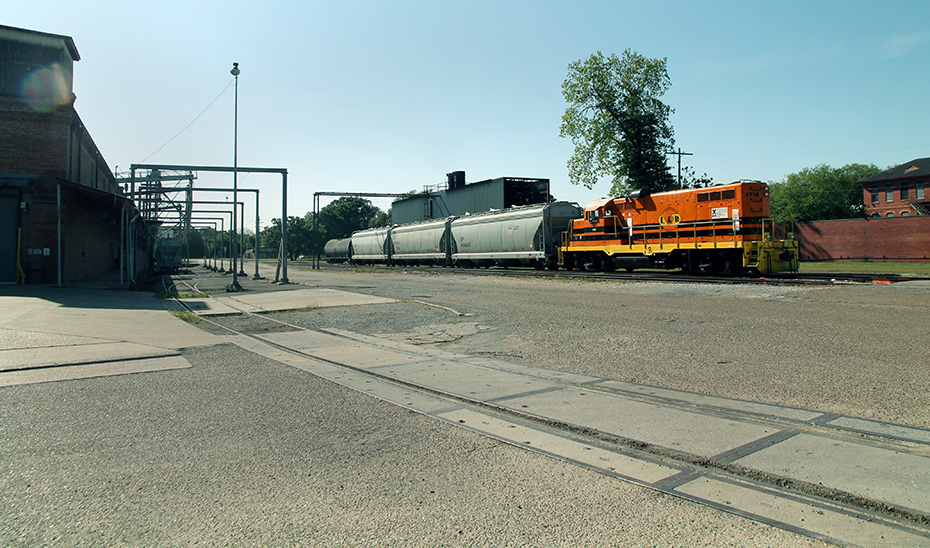
My personal problem with this, beyond it meaning one fewer train coming from the rice mill, is that, since the set of cars pulled today include at least one very-noticeably-graffitied car, and since the set of cars spotted today doesn’t, this means that the last run from the mill will include a badly graffitied car, whereas, if the cars pulled today were taken back to New Iberia today and another run was made to get the last two graffiti-free cars, the last run from the mill would not include any badly graffitied cars.
Oh, well.
Of course, the good news about this is that it means that I will be able to more quickly get on with my life! I love this little branchline railroad and will miss the trains hauling rice hopper cars on it, but obsessing over it, which I have been doing even more lately now that I know that the end is nigh, needs to stop. All of this attention that I have been devoting to this branchline and the operations on it has come at a huge cost; so, this reality of there being no next train to come and get the cars brought today means one fewer train to chase and several fewer pictures to process, which saves me resources.
I’m somewhat relieved, really.
Anyway, at night, I headed back to town to get some night shots of a rare occurrence of a locomotive in town at night.
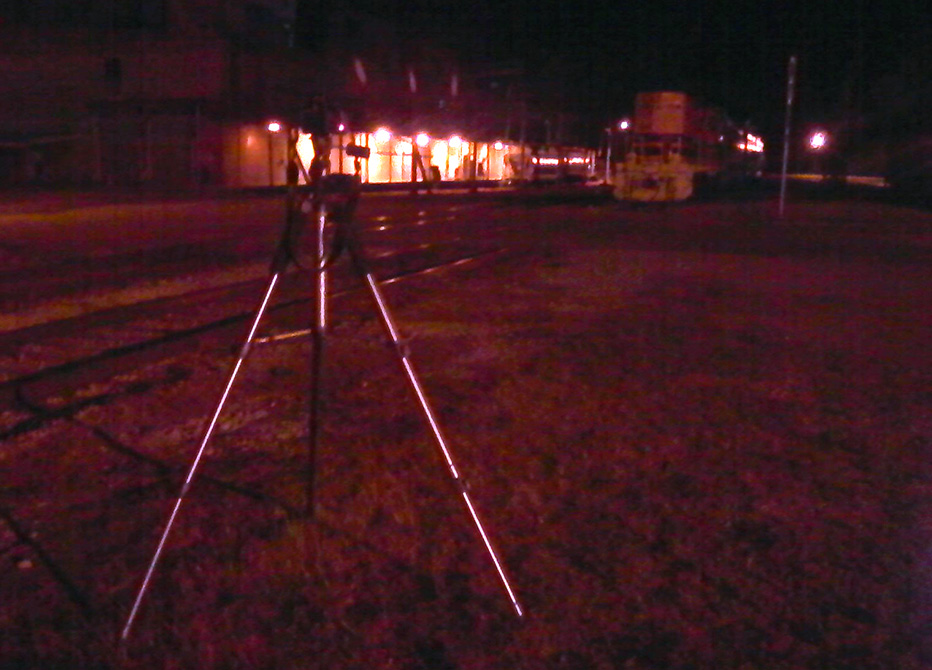
Here we have night shots of the LDRR 1710 and loaded rice hopper cars by the rice mill with two empty hopper cars at the rice mill!
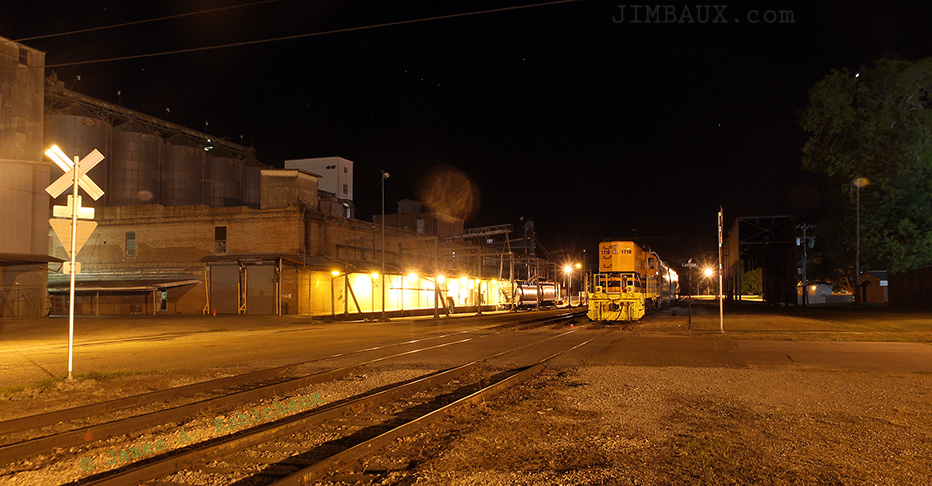
It could be better, but this is now a once-in-a-lifetime opportunity.
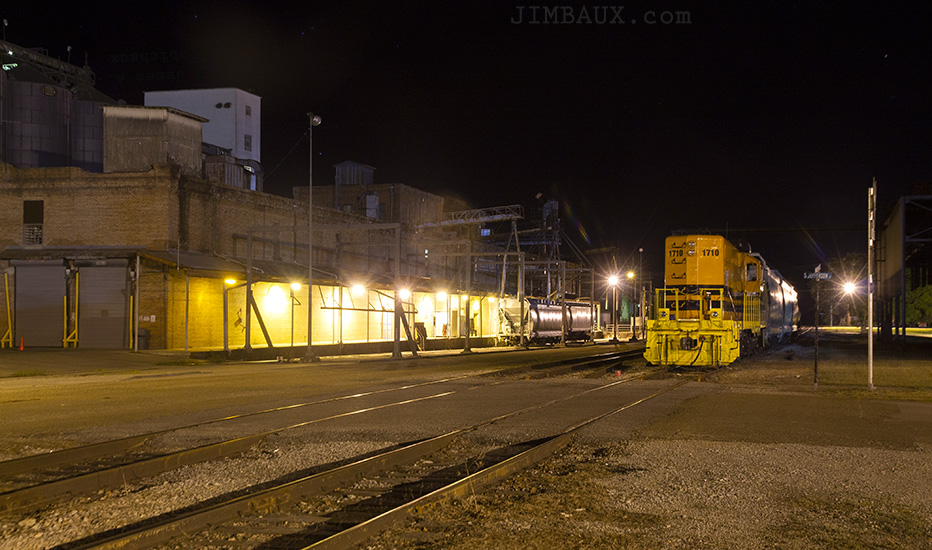
Unless someone buys this mill and restarts it, this will never happen again.
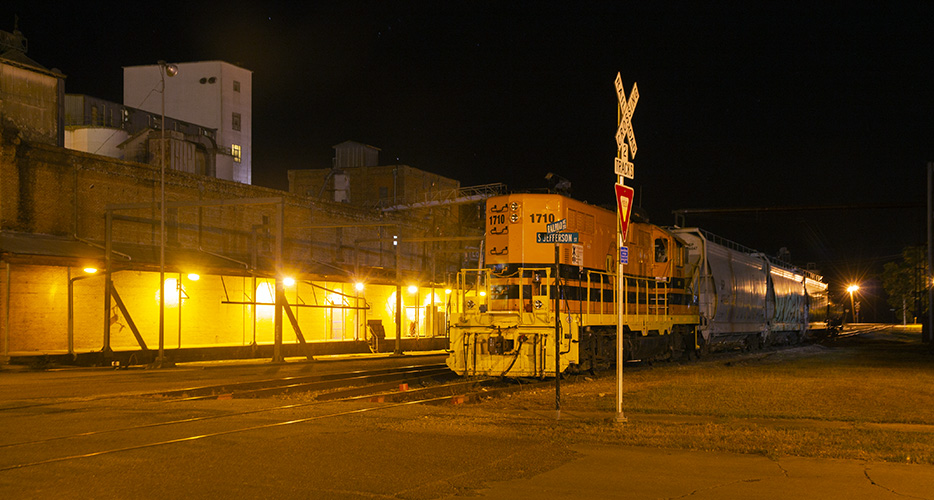
I don’t get out much with the tripod anymore, but I make an exception for this.
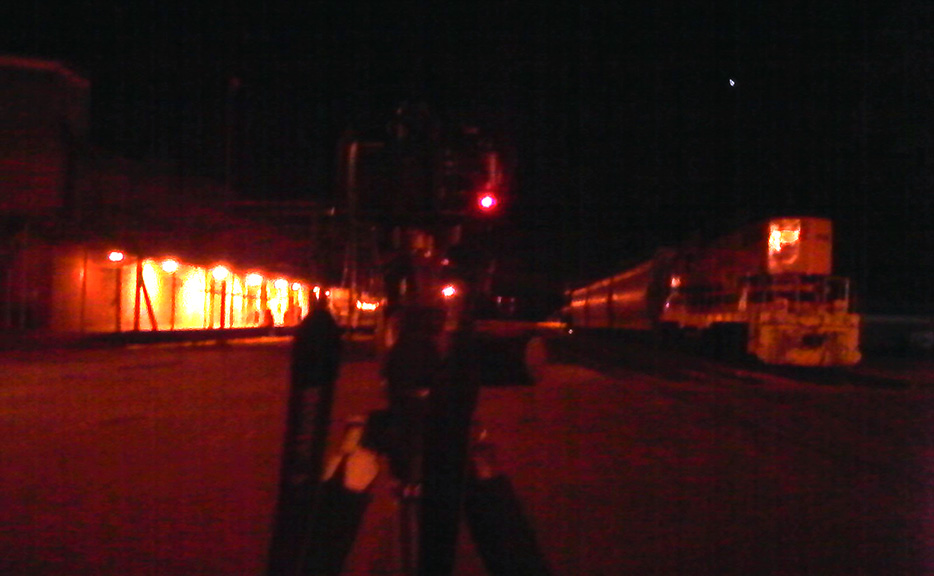
I just wish that those lights at the mill weren’t so blinding.
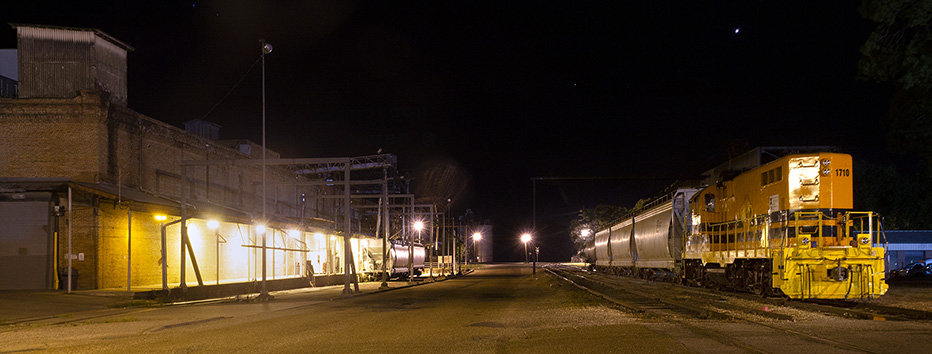
Ah, this is good.
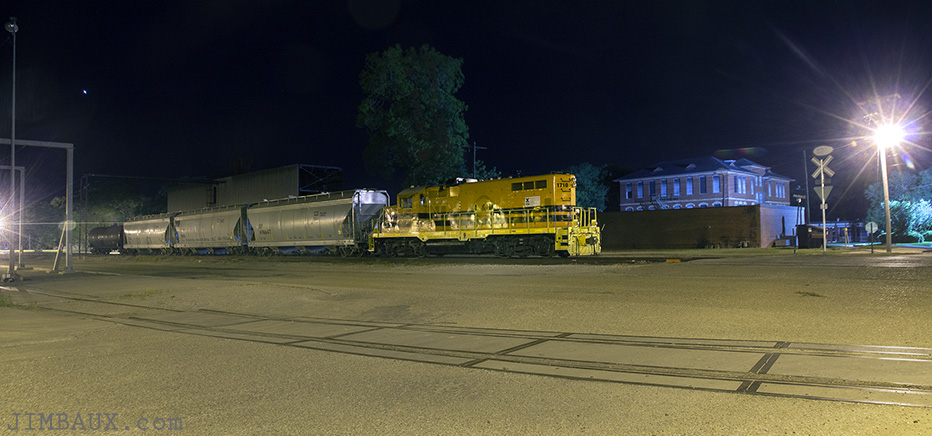
I wonder what the people of Abbeville think of their trains.

I wonder if they know that they are about to lose them.

I wonder if they’d care if they knew.
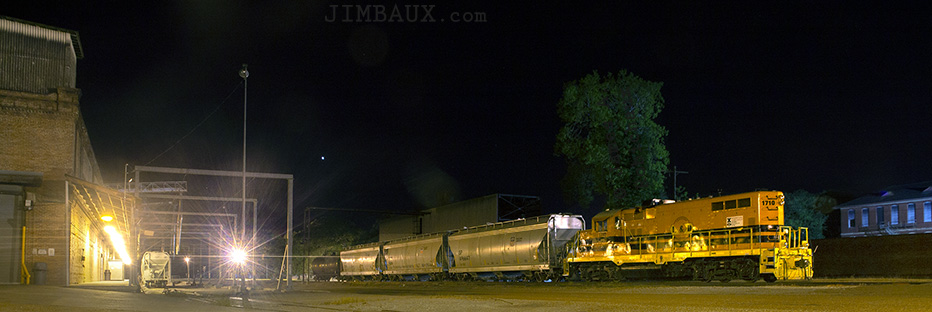
I wonder why they wouldn’t care if they did know.
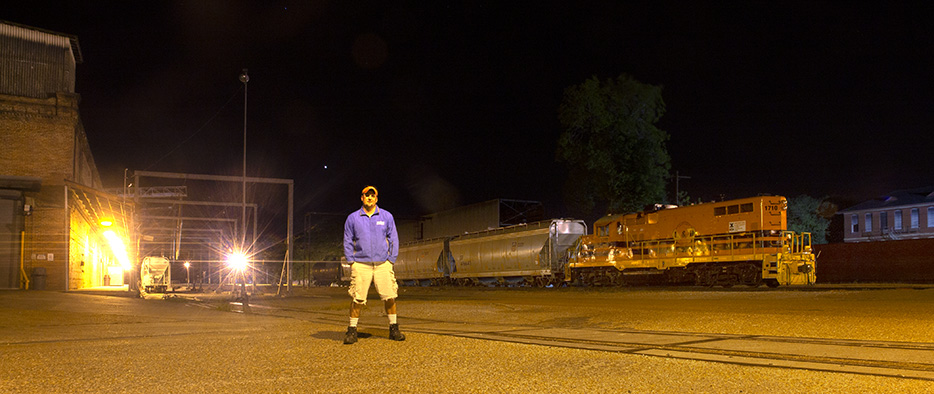
Here comes an automobile.

I wonder if the driver knows.
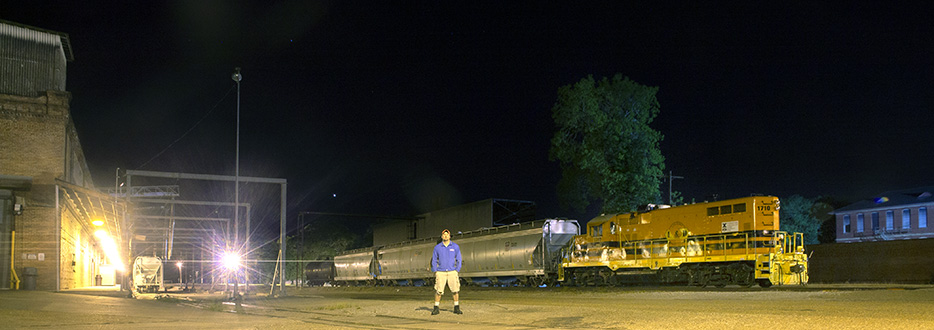
Oh, well, this is it.

What will be will be.
Jim
